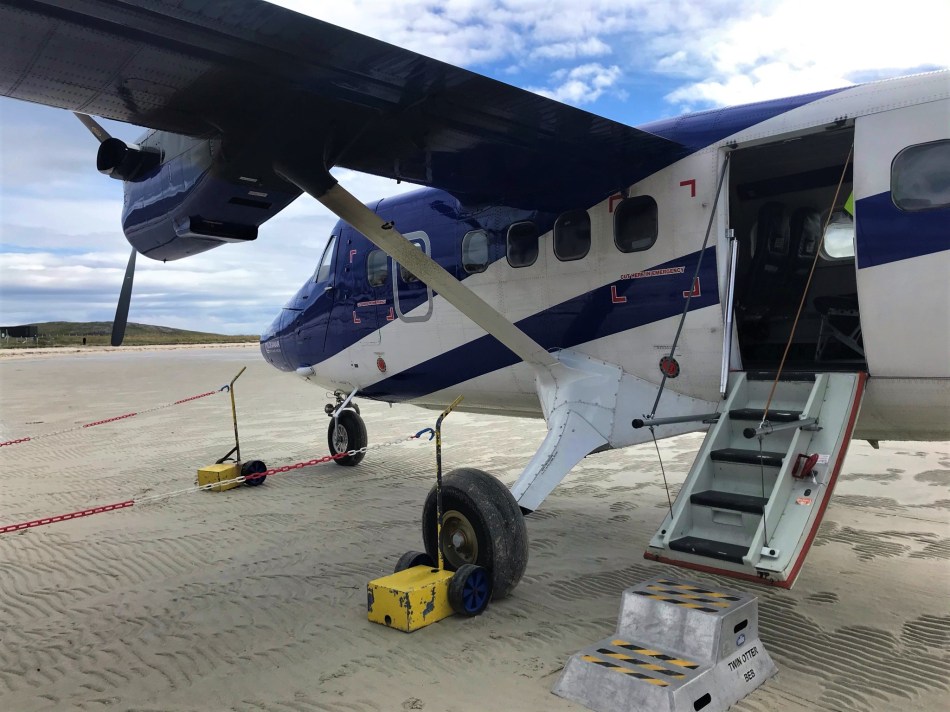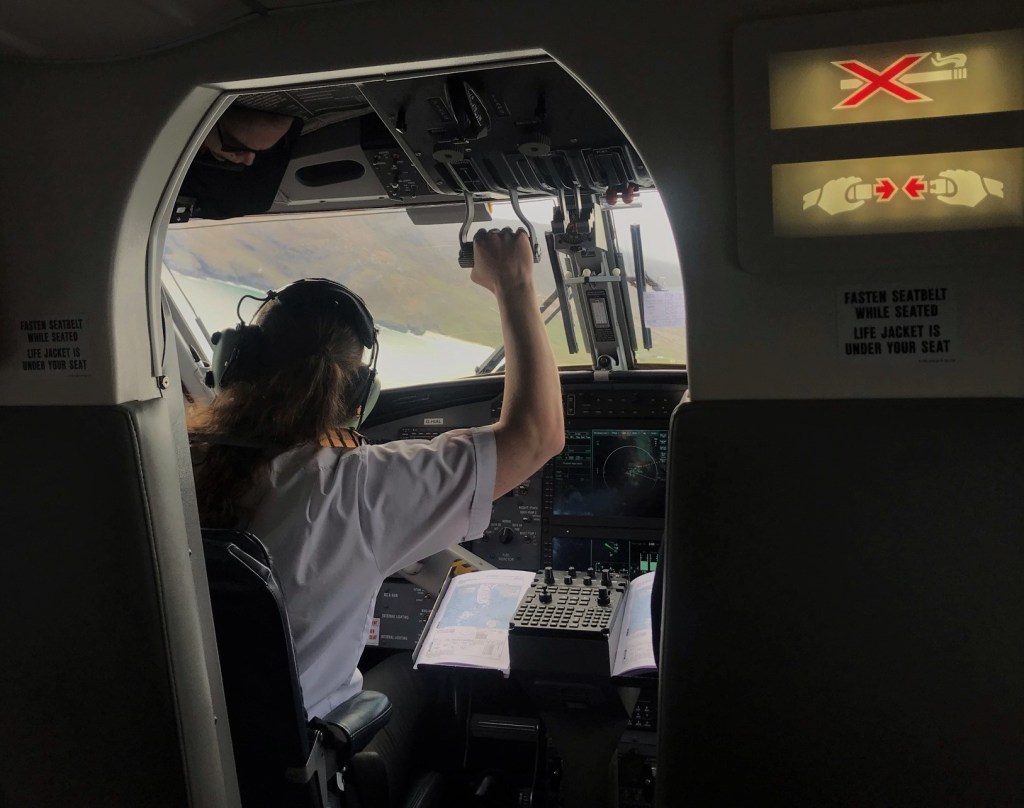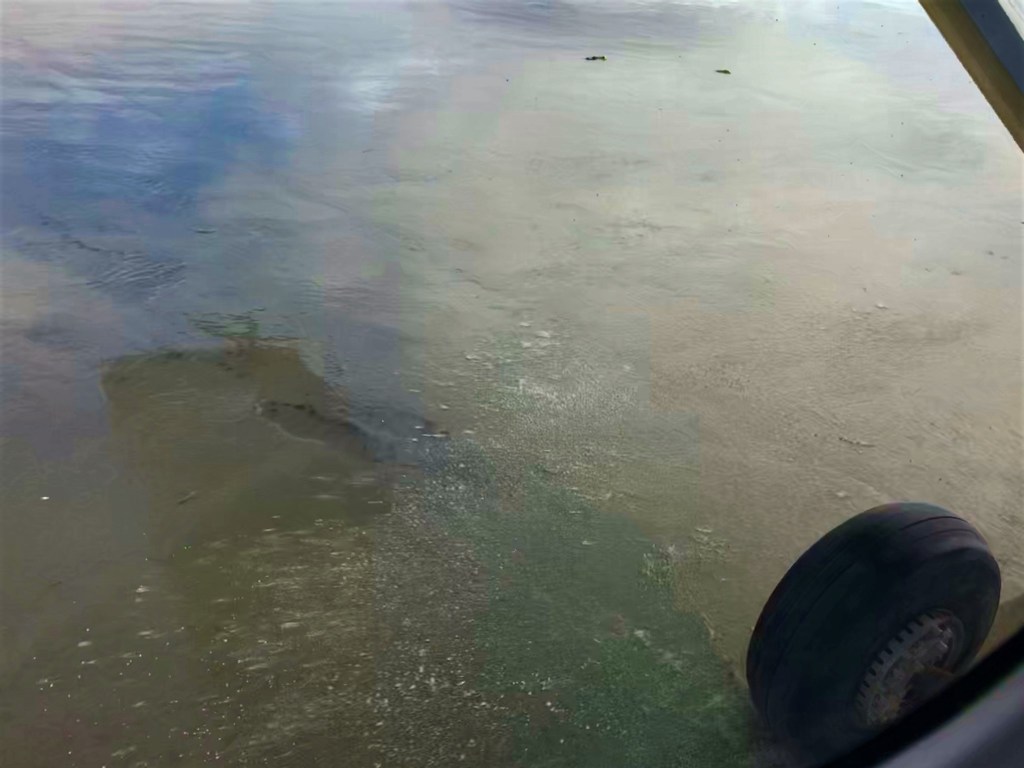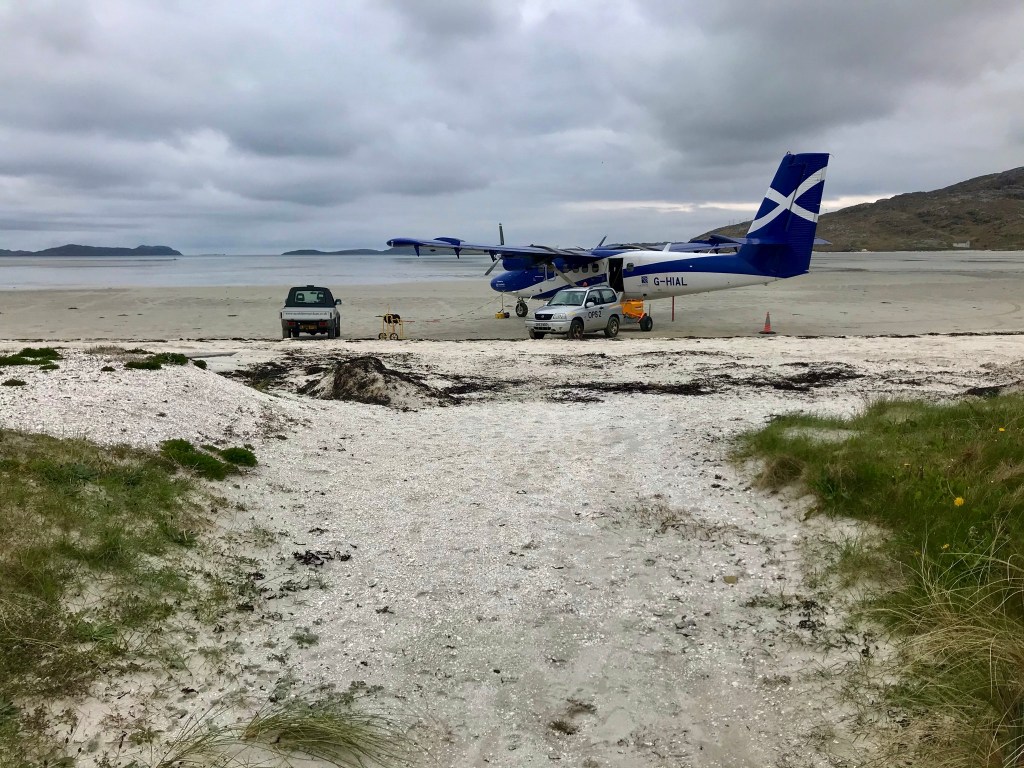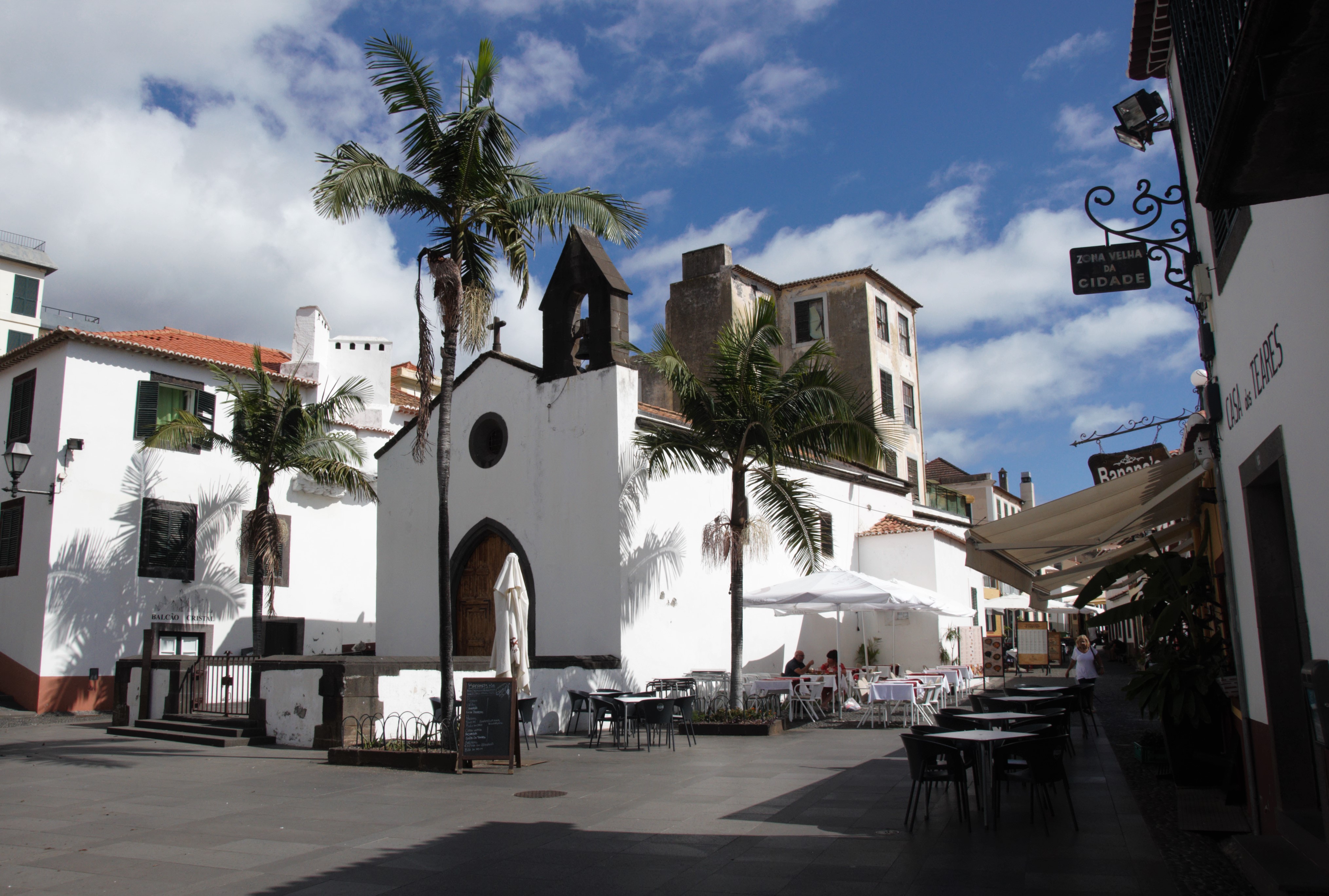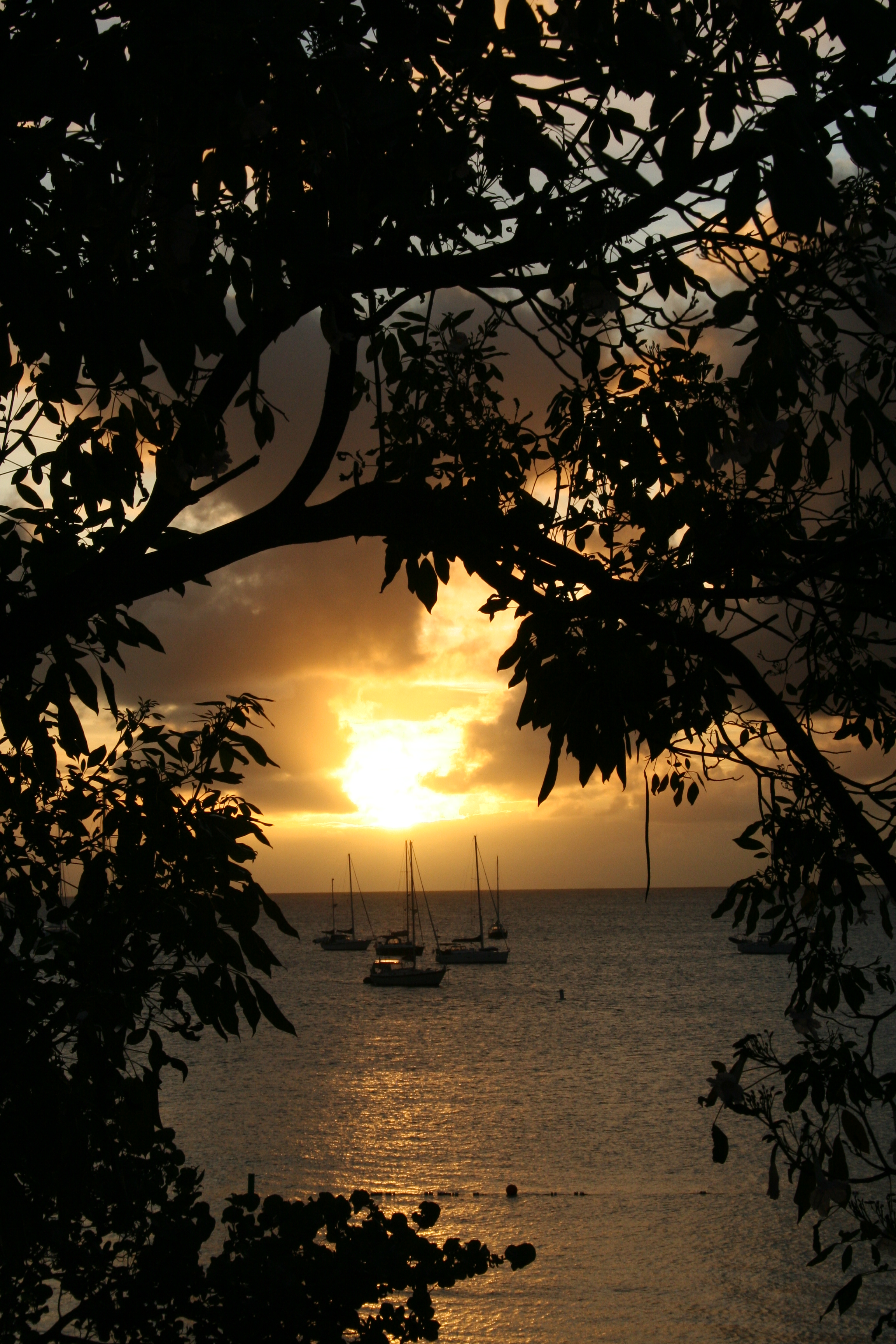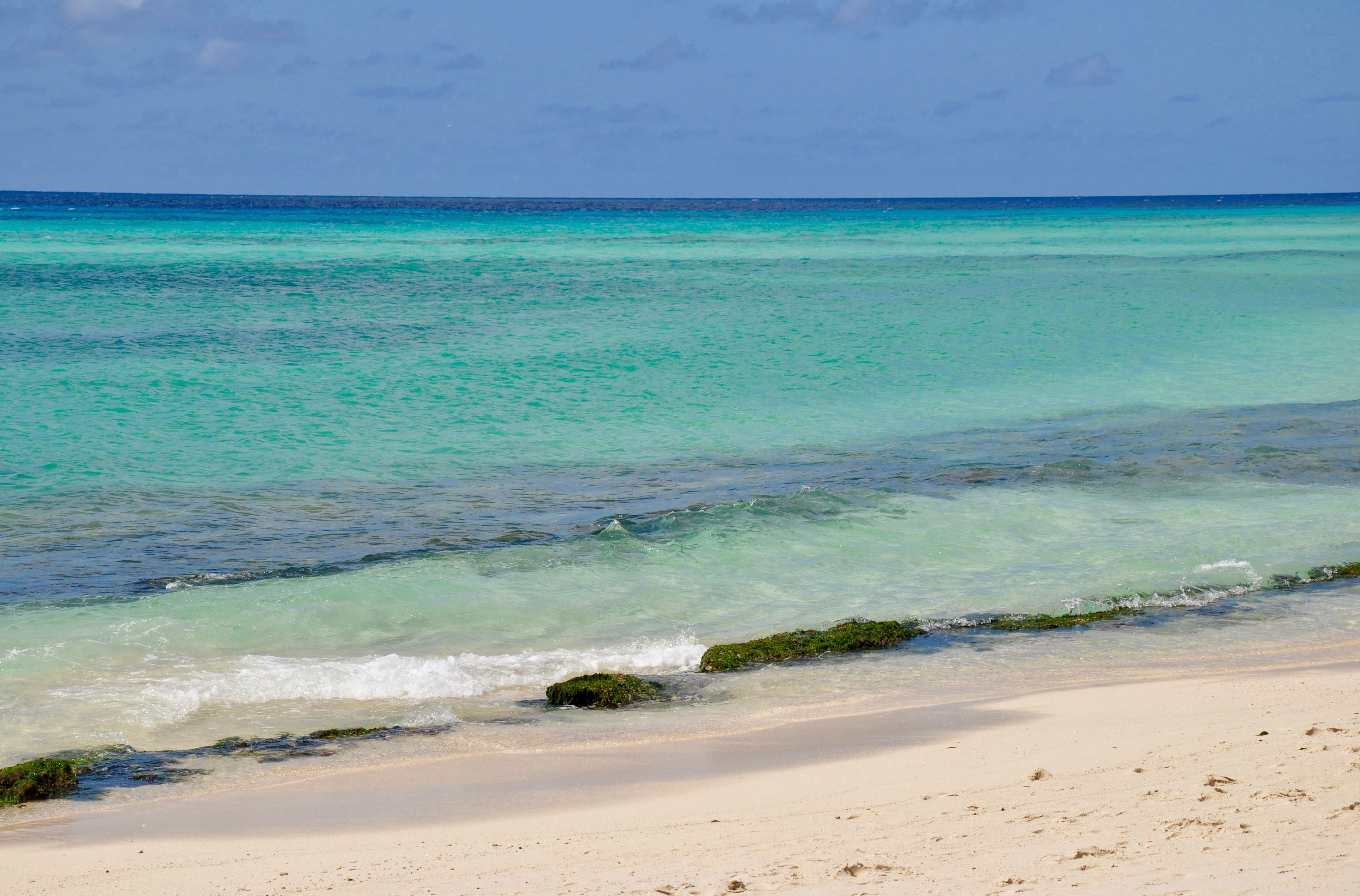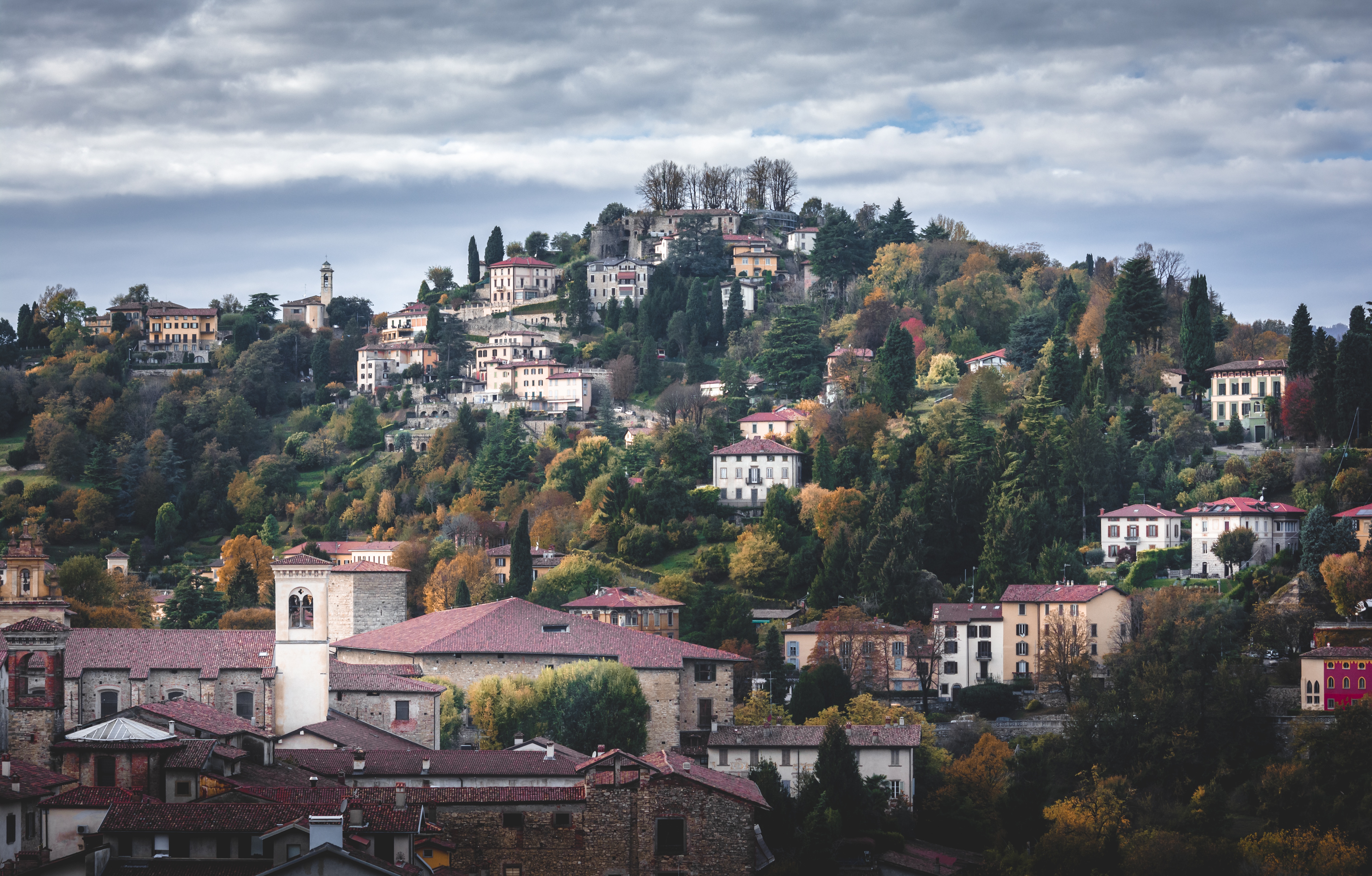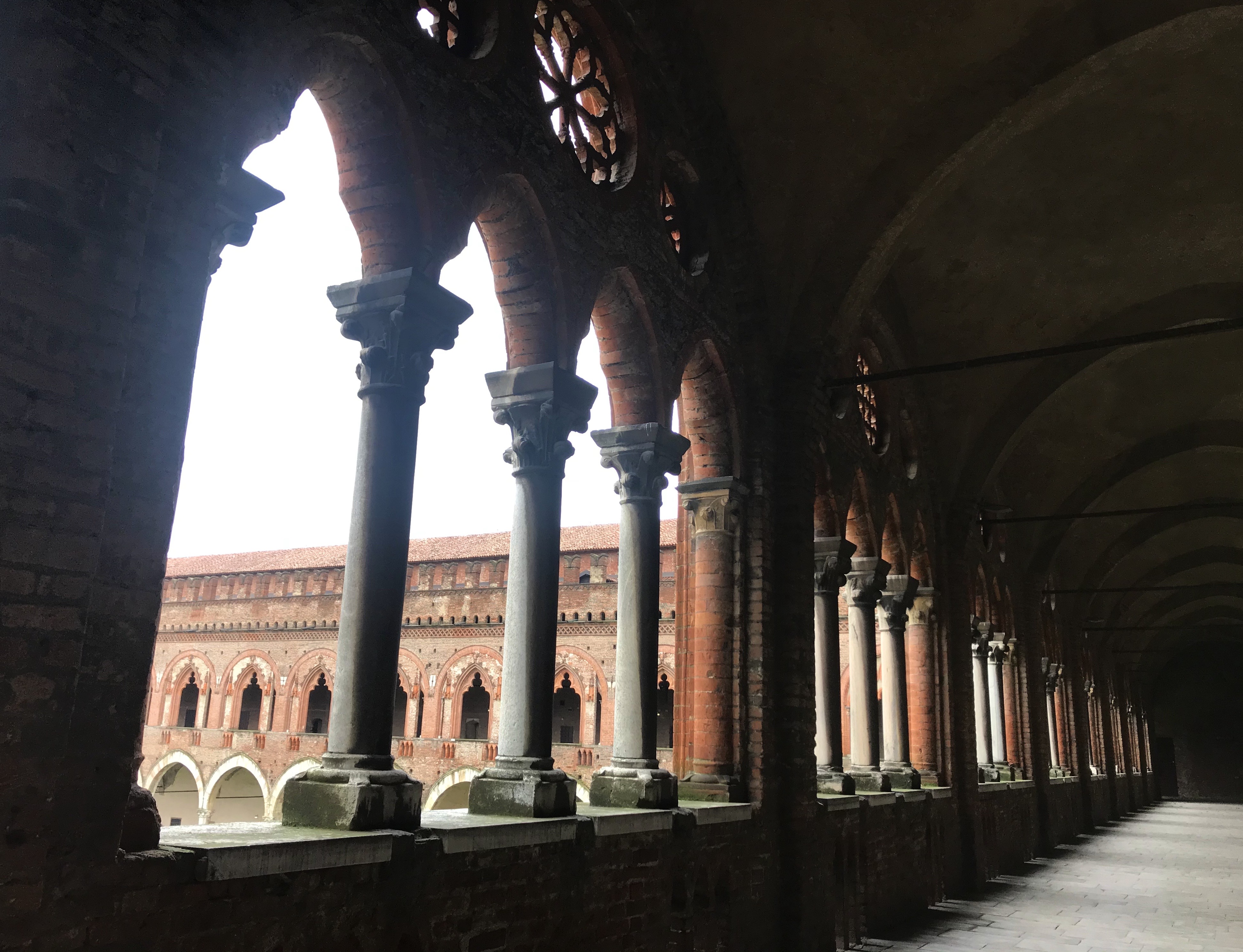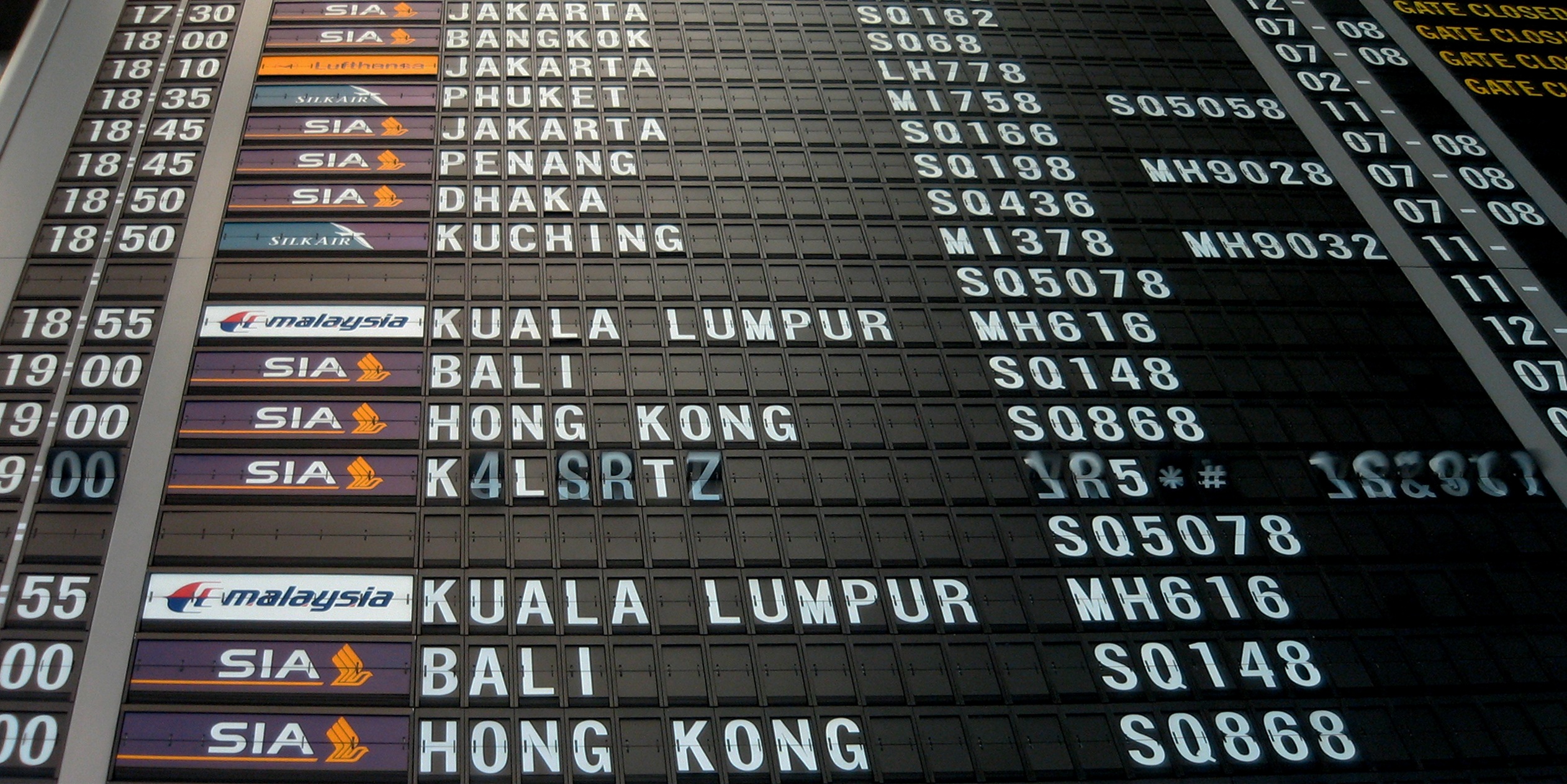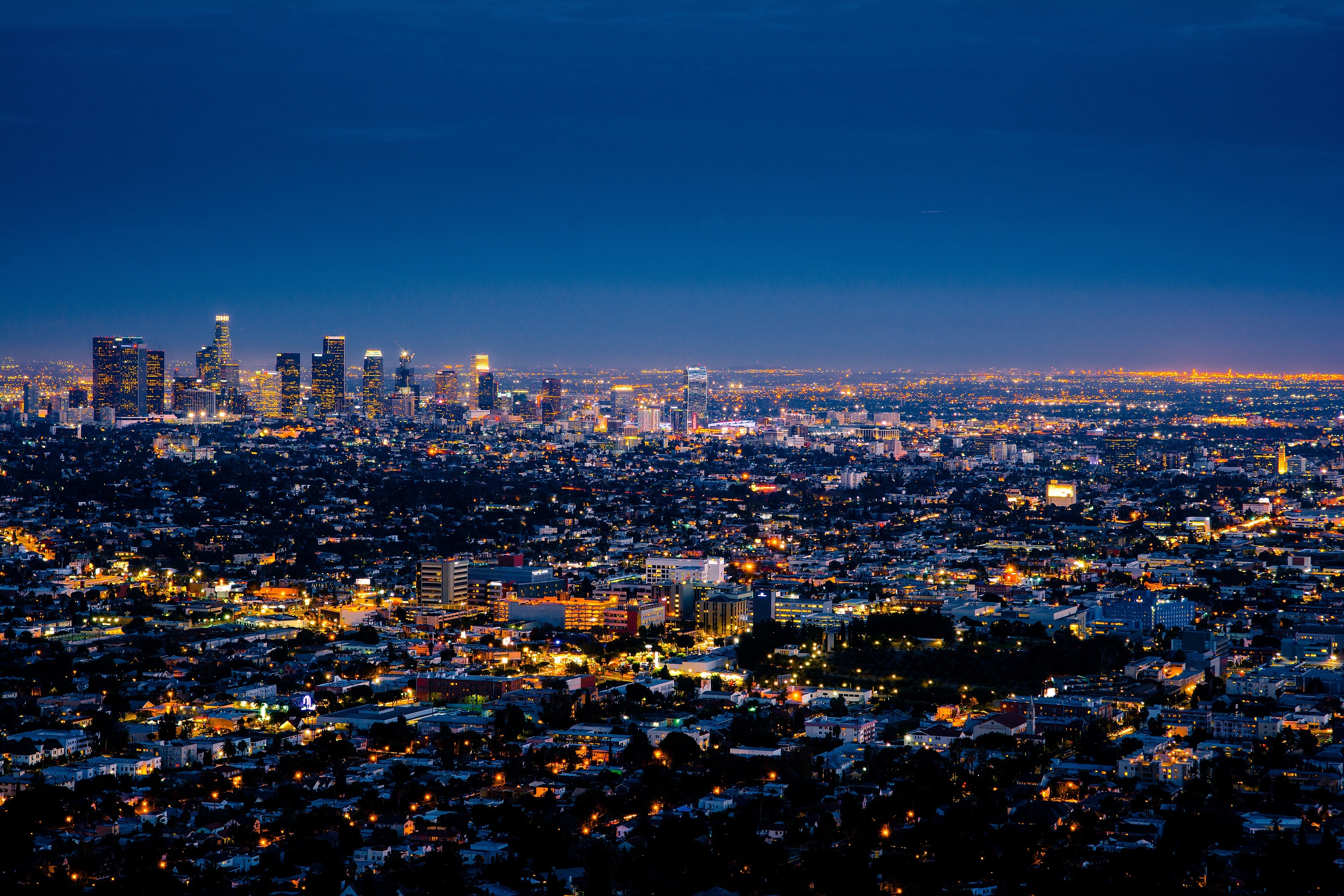How to avoid this summer’s air travel chaos
Post pandemic, travel’s starting to return to normal. After a couple of years of lockdowns, border closures and administrative hoops, it’s finally possible to travel more or less as we used to. Except there’s a problem: staffing. To weather the crisis, many travel businesses – accommodation, airports and airlines among them – had to lay off staff to make it through. Some of those haven’t returned and as a result, travellers across the world have faced disruption, longer than usual queues and sometimes lengthy delays. So what can you do to avoid being caught up in it?
Do your homework

Before you book with any airline, do some research. Even a quick Google search might give you a flavour of the current situation. Have they made the news for repeated flight cancellations and if so, have they implemented measures which have resolved the problems? Ditto the airport. Is it a busy hub that’s been struggling with demand, such as Heathrow or Schipol? If so, see if you have other options. Finally, try to find out if there are any strikes planned as industrial action is a possibility too.
Choose your flight time carefully
Certain times of day are busier than others. For instance, London Stansted has a night quota restriction which means it cannot operate as many flights between 11pm and 6am. It’s often very busy in those first couple of hours when the rules no longer apply, so you’d need to factor in additional time to pass through the airport. At a minimum, allow two to three hours. However, this needs to be balanced with the chance of delays, which tends to be lower earlier in the day.
Opt for hand baggage only
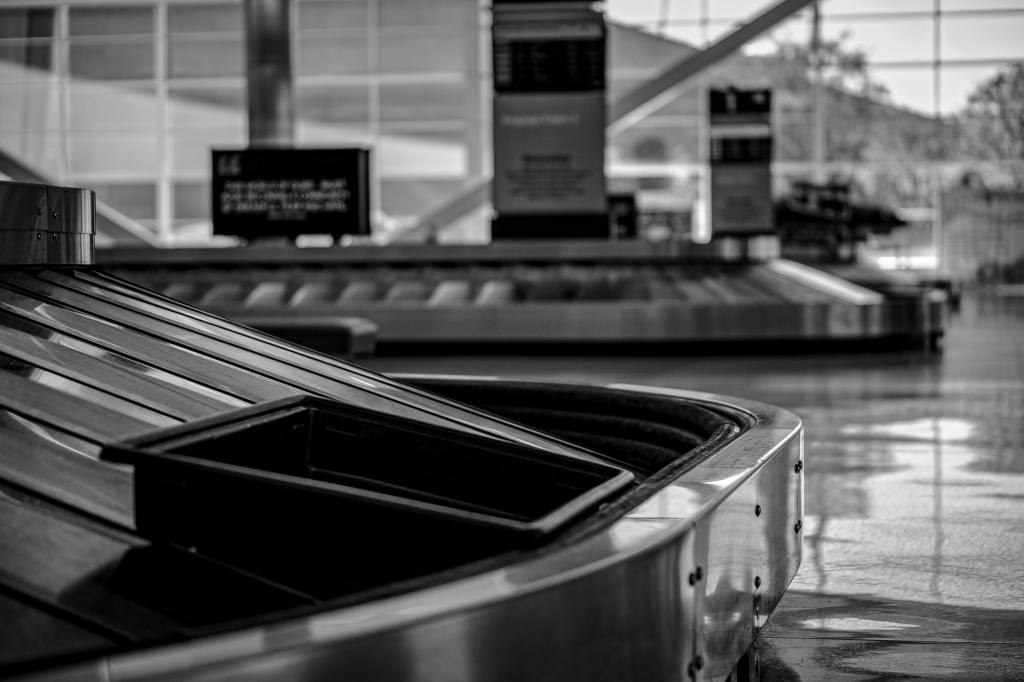
Depending on who you’re flying with, you might find carry-on allowances are surprisingly generous. Given that there have been some well documented cases of luggage hold ups or losses, you might find it less stressful to keep your bags with you. Check airline policies carefully as making sure you measure up is crucial. With some low-cost carriers, such as Ryanair, you might find it’s more cost effective to pay for priority boarding where it comes with a cabin bag allowance than to pay for hold luggage separately.
Be organised for security
Security procedures concerning liquids are something we’ve been saddled with for many years, so check what you’re carrying in your hand luggage carefully. Pack everything that has to come out into an easily accessible outside pocket. Wear slip on shoes if you’re travelling to places such as the USA which require most passengers to remove them. Consider purchasing a fast track pass if you are concerned about time. Some airports will allow you to buy one there and then, so you can see what the queue is like before you hand over your money.
Embrace holidaying at home

As we learnt when border restrictions ruled out international travel, holidaying at home can be just as rewarding. Post COVID, I’ve explored ruined castles in Northumberland, hiked to a pretty waterfall in Shropshire, drove the Bealach na Bà in Scotland and had fun with the dog at the beach on the Isle of Wight. And you don’t even need to spend a night away from home. Be a tourist in your own city or local area – it can cost next to nothing to create a holiday vibe and best of all, you can give the airport a miss completely.
Testing, testing
With so many hoops to jump through, it’s little wonder many people in the UK are choosing to holiday at home this year. While back in 2020 we might have thought that being vaccinated would be a ticket to freedom, unfortunately that’s not the case. International travel feels like a minefield of paperwork and regulations, but here’s my experience travelling from the UK to Iceland. Note that regulations change frequently, so check with reliable sources to ensure that you have up to date information.
Prior to departure
Preparations started before departure. As with many countries, Iceland differentiates between vaccinated passengers and those who haven’t been jabbed. You need to be fully vaccinated at least 15 days before – check the Covid.is website for the latest information. The Icelandic authorities will accept the NHS app but once or twice when I’ve gone into it the app has been unreliable – and one time my vaccine details had disappeared completely. I ordered a paper copy of the vaccine record from the NHS website and it came just under a week later through the post. Note that you can’t get this via your GP a surgery.
A green list country, Iceland required a negative test to enter the country but accepted a lateral flow test. You can keep up to date on the Covid.is website which has an up to date record of everything from regional case numbers to current government legislation. I also found it helpful to follow some of the Icelandic news websites on social media such as Iceland Monitor and Iceland Review as they gave an indication of whether the COVID situation was changing. Case numbers were on the rise before my trip so it was helpful to track that.
Which test?
Unlike the more expensive PCR tests, the lateral flow tests are the same as the NHS tests you can pick up from your local pharmacy. But you can’t use those for international travel as you require a certificate that confirms a negative result. I found that there were fewer places offering lateral flow tests in my area (perhaps because many more countries require PCR tests instead). Though I could have used a postal service I was concerned the result wouldn’t come through in time.
In the end I opted for a test with Collinson using their drive-thru testing facility at London Stansted Airport. Unfortunately I was flying from Luton, but the flight was so early I wasn’t able to use the testing facility there. So instead, I made the hour and a half round trip a couple of days ahead of my flight. There was no queue, availability was good and I stayed in my car the whole time – the nasal swabbing was conducted through the car window. The negative result came though via email almost exactly 30 minutes later. With easyJet’s discount, the cost of the test was £32 (regular price £40).
This is also the time to book your Day 2 test. The UK government requires all inbound passengers to complete a detailed Passenger Locator Form and the booking reference for this test is one of the pieces of data you’ll need to add to the form. I opted for a mail-in service this time. I used Randox. They don’t have the best reputation for reliability. Twitter users have reported that their return boxes have been full to overflowing. However, though there are only three drop-off points in Essex one of them is only a short drive from my home it is convenient. The cost of this test was £43.
Outbound
To be able to board the flight, it was necessary to show proof of the lateral flow test to the gate staff. The Icelandic government’s rules had changed just a few days before I flew out and some passengers had been caught out. They were dismayed to learn that they had been denied boarding – hopefully they were able to get a test and a later flight. Rebooking wouldn’t have been an issue in terms of availability as the flight I took was only about a third full. That’s in August, the height of peak season.
On arrival at Keflavik passport control formalities were completed fairly quickly – though of course British passports are now stamped. After that came duty free and baggage claim for those that wanted it before the final test check at the exit. Paperwork was looked at and I was good to go. I understand that there is a hefty fine for those who get caught out, though the airline should pick up any issues long before you get that far.
In Iceland
The UK government requires all inbound passengers to be tested within three days of returning to Britain. There is a testing facility very close to Keflavik Airport (easy to find in a building beside the Courtyard by Marriott hotel). I booked for the afternoon prior to my flight; a text and email reminder were useful. The sign on the door said they were all booked up for that day, so definitely plan well in advance.
I got tested with a friend who has been trained to administer the tests. She was concerned about some of the procedures being followed. Five people were escorted to the testing room at a time. Each was allocated a numbered seat and then the tester conducted each swab in turn. My friend noticed mistakes: the person didn’t swab both nasal cavities, and she squeezed each sample without changing gloves, potentially increasing the risk of cross-contamination. It was certainly a production line affair. The tests came back negative about 20 minutes later – another hurdle jumped. Cost of this test was 6900 ISK (about £41).
Next, the thing that’s so easy to forget: the Passenger Locator Form. This is a detailed document that you have to fill in on the UK Government’s website, so make sure you have WiFi or data roaming as you’ll need to go online to fill it out. Amongst other things you’ll need your flight details (including the arrival time and a seat number, so you will need to have checked in) and also your passport details. This form has been around for some time but the requirement to supply a booking reference for your inbound test wasn’t needed in 2020.
Inbound
Departing Keflavik went smoothly, but it’s important to have all your documentation to hand. Security and passport control were as normal, requiring the boarding pass and passport respectively. The UK government paperwork was checked at the gate. This can be time consuming if your flight is full so it’s wise not to leave it too late. The gate staff asked to see the passport first, then the Passenger Locator Form, then proof of vaccination and finally proof of a negative test result (for the test conducted in Iceland). Once all of those were seen, the boarding pass was scanned and I was free to board.
Arriving at Luton, I used the e-gates and as all the information was electronic and paperwork had been checked in Iceland, no further checks were necessary. I completed the PCR test using the home kit Randox had sent me and drove it over to the drop box in the next village. I had an email later that day to confirm Randox had received the kit and another the day after confirming the test was negative. Now all I have to do is to decide where to go next…
Thoughts on the COVID vaccine passport
There’s been some discussion in the press and on social media about a possible COVID vaccine passport. Currently, as you’d expect from an unanticipated pandemic, the response to traveller demand has been inconsistent, with each nation making their own decisions about how to proceed. Some require advance or on arrival COVID testing, others have closed borders and a few have relied on track and trace. Keeping abreast of changes to know what the current situation is can be tricky, as I discovered when I travelled to Iceland in the summer.
Now there’s a vaccine on the cards, IATA has put forward its Travel Pass. This will be a digital platform where data on tests, vaccines and other relevant information can be stored securely. The scheme is due to be piloted this December and launched in the first half of 2021. The advantage of a speedy rollout is designed to dovetail with the vaccination programme – in other words the idea is to ensure that if you have a vaccine early in 2021 it would be recognised on this database.
Of course, there can be no assumption that the vaccine will work for everyone, nor will every negative test result ensure that the person sitting next to you on that plane won’t be an asymptomatic carrier. There are no guarantees and with a disease as contagious as COVID-19, even a digital travel pass won’t provide enough reassurance for some.
In the past, other travel vaccinations have been linked to entry requirements. When I visited Panama, I had to carry the yellow fever vaccination booklet to show to border officials if asked; I wasn’t. When applying for a visa to visit Uganda last year, I needed to supply that same proof of a yellow fever vaccine as a condition of receiving it. The WHO has this to say about yellow fever:
“The vaccine provides effective immunity within 10 days for 80-100% of people vaccinated, and within 30 days for more than 99% of people vaccinated. Good supportive treatment in hospitals improves survival rates. There is currently no specific anti-viral drug for yellow fever.”
Right now, results from the coronavirus vaccine trials indicate that they don’t have such a high success rate. But in terms of vaccines being a component of the decision on whether to permit you to travel, there’s obviously a precedent. Many of us can choose whether or not we wish to fly internationally and we can also therefore decide whether we are comfortable with both the risks involved in air travel and also with our personal information being stored in the manner IATA suggests.
As Australia’s relative isolation and sparse population have helped keep cases low during the pandemic, it was no surprise to read that Qantas was the first airline to come out and say they’ll require passengers to be in possession of this kind of travel passport when a vaccine’s been rolled out. Boss Alan Joyce was quoted in the press at the end of November as saying he felt it was a necessity to boost confidence and enable air traffic to get back to some kind of normal. That news didn’t go down well with UK travel agent Tradewinds, who countered with an announcement that they would cease booking their customers on the Australian airline. Their argument? They were pro-choice rather than anti-vaccine, they said. (As far as I can see, they aren’t offering tours to Uganda, which would have been interesting.)
Personally, I’m comfortable with having the vaccine – in the same way I’ve opted for typhoid, hepatitis and even the fairly useless cholera jabs in the past. So long as my personal data’s stored securely, I’m also OK with carrying a health passport. However, I respect that not everyone feels the same way. What about you?
It’s travel, but not as I know it
As more and more of Europe experiences a rise in coronavirus cases, and the weather worsens as we head into winter, my thoughts are inevitably turning to travel further afield. I hate November with a passion. Since I’m no longer tied to school holidays, that means I can escape to far-flung destinations such as Barbados for a bit of autumnal sunshine. But this year’s a little different, of course. After my recent trip to lovely Madeira, tentative hopes to visit perhaps the Azores or Santorini were dashed due to the lack of direct flights and I remain wary of travelling long haul lest the situation worsens and I end up stranded.
I’m not even sure I’d enjoy the experience, if what’s on offer in Cuba and St Lucia becomes the norm. I’ve enjoyed trips to both those Caribbean countries and part of the appeal as an independent traveller is to explore on my own. But right now that wouldn’t be possible. Take St Lucia for example. Travellers of many nationalities including Brits are permitted to fly; BA are operating direct flights and TUI have just followed suit. So long as you can present a recent negative test result, you’re in. But that’s when things get a little more constrained.
The advice on the UK’s FCDO website reads:
“You must remain at your COVID-certified accommodation for the duration of your stay in St Lucia unless you are on an excursion arranged by the hotel. You may not leave the property by vehicle or on foot during your stay.”
To elaborate, St Lucian authorities permit travellers to stay in certain hotels. There are 30 such places on the official list, though not all of them have opened quite yet. No worries there. In fact, the hotel in Rodney Bay I chose before is on the list and I’d be more than happy to stay there again. The issue is what happens when I want to leave the resort. Current regulations state that unless I choose from a predetermined list of excursions with an approved list of operators then I’m legally bound to stay put. There’s nothing wrong with that if that’s how you usually travel, but I don’t enjoy holidaying like that.
The experience in Cuba would, from my perspective, feel equally restrictive. Last time I visited this fabulous country, I split my time between Havana and Trinidad. I explored sugar plantations by day, travelled in style by vintage car and danced late (for me) into the night fuelled by sweet but potent canchancharas. If I were to visit right now, I wouldn’t be landing at Havana Airport – it’s only open for repatriation and humanitarian flights. The situation is a little more relaxed than it was before – visitors are allowed to rent cars and aren’t entirely confined to the beach resorts. And sometimes, as it was for me, it’s cheaper and easier to see the sights on an organised excursion.
Nevertheless, Havana remains off limits, as does Ciego de Avila, Spriritus and Pinar del Rio. Note too that although tourist flights to other parts of the country are operating, the current FCDO advisory states:
“Visitors who fly directly in Jardines del Rey Airport (for holidays in Cayo Coco, Cayo Cruz or Cayo Guillermo) may rent cars, but cannot leave the Cayos.”
I’m not suggesting for one minute that the Cuban or St Lucian governments aren’t doing the right thing. They have a responsibility to take care of their citizens and this is an effective way of balancing that duty with the need to kickstart their economies in a COVID-safe way. Tourism is a major income generator for both islands, as it is across the wider Caribbean region. A number of islands are now deemed safe destinations for British tourists, including Barbados, Antigua and the British Virgin Islands. Each is managing arrivals in their own way. The information’s easy to find and it’s up to you to decide whether you would be able to have the kind of holiday you hope for.
For me, a trip isn’t on the cards until I can travel my way. I guess I’ll just have to be content with Tenerife, but as the UK heads into Lockdown 2.0 even that will probably have to wait until 2021. What about you?
Why I’m not thrilled at Stansted’s expansion plans
A few days ago Uttlesford District Council approved plans that would see Stansted grow its passenger numbers to 43 million a year. The news comes hot on the heels of a press release announcing that the airport had just experienced its busiest October ever. 2.5 million passengers used the airport, up almost 9% on the same month in 2017, bringing the annual total to over 27 million. It’s good news for the local economy, with an already buoyant job market fuelled by such growth. Stansted claims that 5000 new jobs would be created by the continued expansion of its facilities. An increase in flights, with some long haul routes now offered, increases choice and offers an alternative to driving over an hour further to Heathrow or Gatwick.

So why am I unhappy?
First, it’s not a case of NIMBY-ism. Though Stansted airport is my nearest, it’s still a forty minute drive away. By the time Stansted’s planes fly over my home, they’re at such an altitude that noise pollution isn’t an issue. I’m not affected by increased traffic, nor am I impacted by any kind of blight on house prices, though I’m sympathetic to those who are.
No, my concerns lie with the airport experience. I travel fairly frequently and time spent at the airport is a necessary evil if I am to do my job. My recent experience of Stansted hasn’t been a positive one, with issues cropping up every time. Parking is the first problem. I remember not so long ago being able to turn up to long term parking without having to pre-book. Clearly that’s not the case anymore, not just at Stansted but elsewhere too, just as you don’t generally have the option to drive up to drop off in front of a terminal free of charge either. But a fair number of my Stansted visits are day stays – and long term parking at Stansted has a minimum three day stay. Mid term is often full, leaving me with a fee of £30 or more to park at short stay. (Living in a small village I don’t have a public transport option.) I appreciate that with increased passengers, rationing spaces by cost is the logical solution. But allowing this day tripper to use the long term parking would reduce my parking cost by a third.

Inside the terminal, it’s common for the space to be excessively crowded. Once, this Norman Foster designed building was a pleasure to transit. Now, with the security gates shifted from the back of the terminal to the side, it has become a veritable obstacle course. The queues first thing in the morning usually reach the gates, and sometimes extend beyond them. Security staff seem less friendly than in other airports and occasionally rude. Management, to be fair, do listen but there does seem to be a need for training. My luggage “fails” at a disproportionately high rate compared to other airports. I have no idea why. It’s not like I pack differently for those journeys. On one occasion, a staff member moved my coat to cover my iPad, necessitating a manual check “because your items were stacked on top of each other”. On another, I was told that my wheelie case required an additional check because it had been placed “at the wrong side of the bin” – I wasn’t aware there was a wrong side of the bin and neither was the manager I spoke to afterwards.
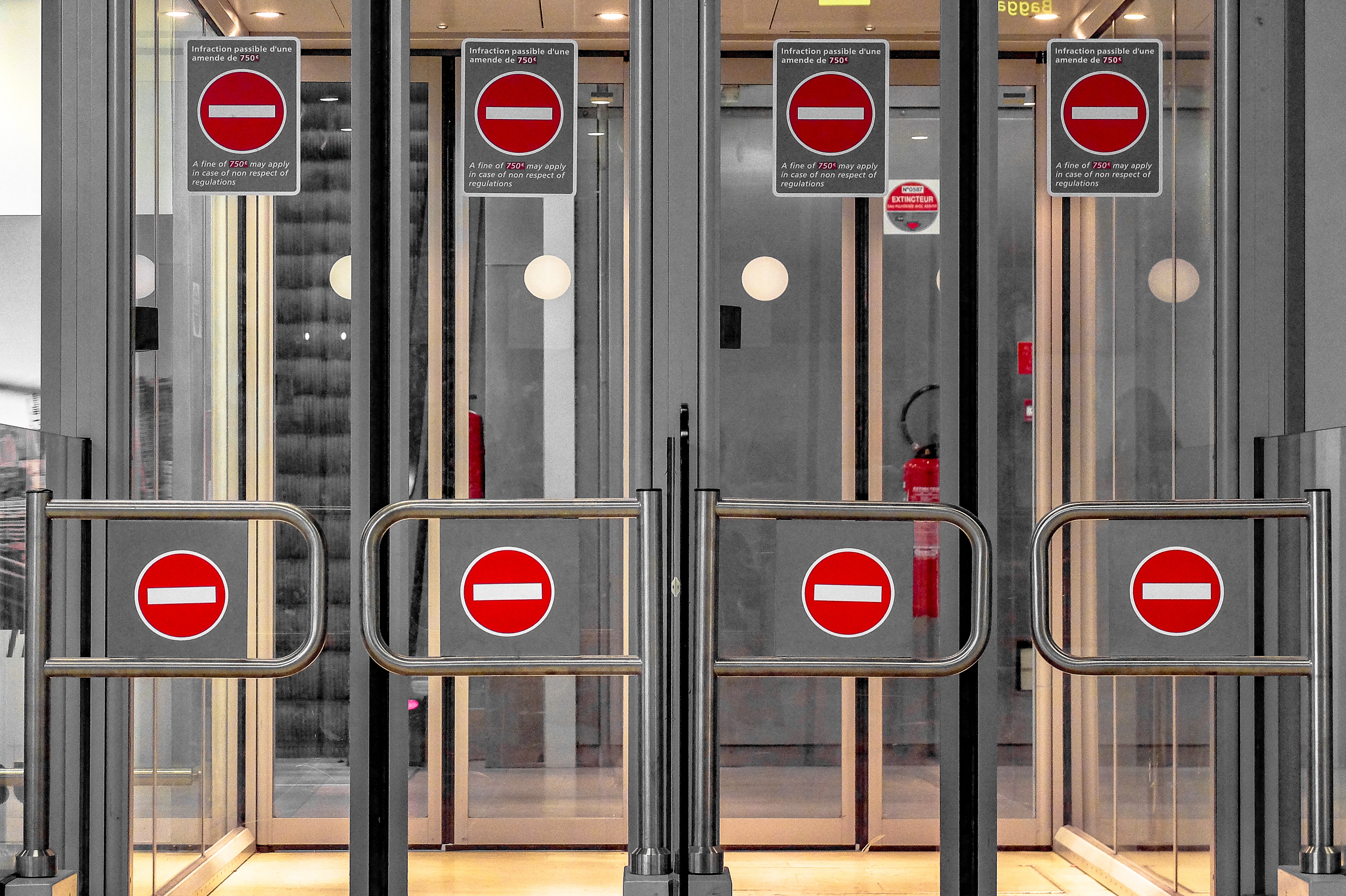
Security eventually navigated, the queues funnel through the duty free and shopping area. The space is narrow and littered with passengers and bags. The main holding area is also rammed, partly because gates aren’t announced until late on. Stansted have tried to tackle this, not by clearing out the clutter, but by closing the airport overnight in an attempt to foil travellers who plan to sleep stretched out across several seats. A long term programme of investment to the time of £600m and significant expansion is underway. The sooner that has an impact the better. Right now I feel more stressed waiting for my Ryanair flight to be called than with the boarding process. Yes, you did read that right – Ryanair’s part has generally been the best part of the whole process. If that doesn’t jinx December’s flight, I don’t know what will.
So forgive me if I’m not dancing with delight at the news Stansted is going to get even busier. If by some miracle, Ken O’Toole, Stansted’s CEO, happens to read this, then please think carefully about how you plan for all these additional visitors. The good news is that your airport surely can’t get any worse.
A beginner’s guide to the Faroe Islands
One of the most remote and most overlooked corners of Europe, the self-governing Faroe Islands might be part of the kingdom of Denmark but they believe in doing things their way. A long weekend is just sufficient to see why those who find themselves there can’t get enough of the place. In part, it reminds the traveller of Iceland, Norway, Scotland and even the Yorkshire Dales, but in truth it’s all of them and none of them.

Getting there
Flights are operated by two airlines: Atlantic Airways and SAS. There’s a twice-weekly direct flight from Edinburgh to Vagar Airport. Flight time is around an hour. However, if you have onward connections, particularly on the inbound leg, it’s wise to allow a longer than usual layover because flights are often affected by bad weather. All other flights from the UK are indirect, with the greatest number of connections via Copenhagen as you’d expect.
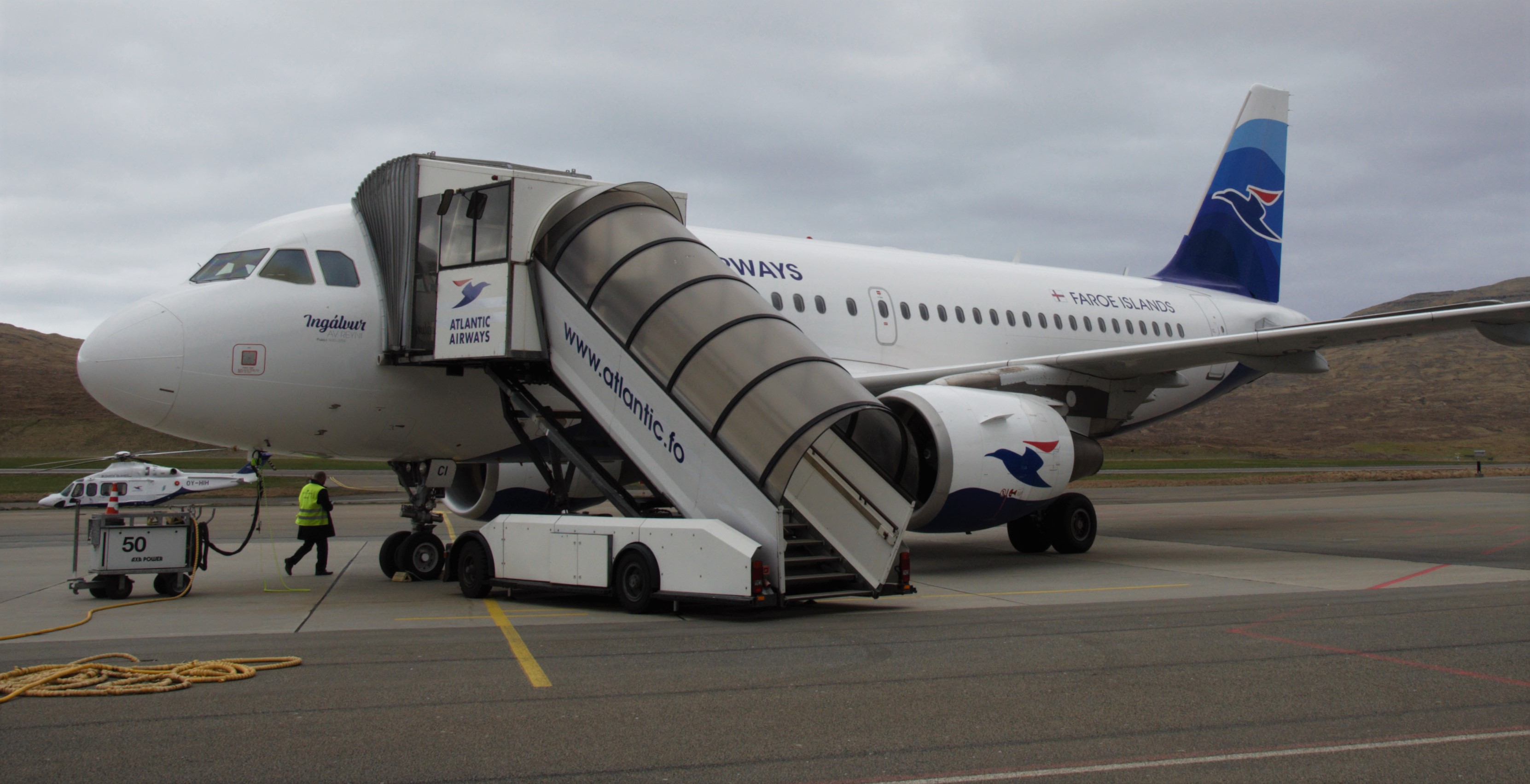
Getting around
If you have plenty of time, or are happy to be constrained by public transport routes, it is possible to get around without your own vehicle. An airport bus connects Vagar Airport with the capital Tórshavn. In town, the centre is compact and walking between the main sights is easily doable. In addition, there’s a free bus that links Tórshavn to historic Kirkjubøur. Ferries are as reliable as they can be given the wild weather, but cheap, particularly if you walk on. For instance, foot passengers travelling from Gamlarætt to Skopun on Sandoy Island pay just DKK 40 return (less than £5) while a car costs under £20. Multi-day travel cards might work out cost effective if you are travelling around a lot; they cost DKK 500 for four days and are valid on all buses and most ferries.

For timetables, visit the Strandfaraskip website:
http://www.ssl.fo/en/timetable/ferry/7-tvoeroyri-torshavn/
Car rental is best if you wish to get off the beaten track. We rented from 62°N which is affiliated to Hertz, Europcar and Sixt, but there are several other agencies. Typically, prices start at around DKK 600 (£70) per day for a small car. In my experience, roads were good quality and drivers courteous, but the buffetting wind can be disconcerting if you’re not used to it. The Visit Faroe Islands website has plenty of sound advice about driving conditions and rules of the road as well as this useful graphic:

Helicopter rides are also possible if the weather is playing ball, which sadly it wasn’t during my trip. A community initiative means that transport is subsidised, meaning you can be airborne for a tenner. A chopper transfer from Vagar to Tórshavn bookable through Atlantic Airways costs DKK 215 (about £25). Fares between other islands cost from DKK 85 to DKK 360. More here: https://www.atlantic.fo/en/book-and-plan/helicopter/fares/

What to see
Tórshavn
The Faroese capital is a delightful, quirky little place with much to recommend it. Begin between the twin harbours at Tinganes, seat of the Faroese government. The russet-painted government buildings with their verdant turf roofs are impossibly photogenic and unusually accessible.
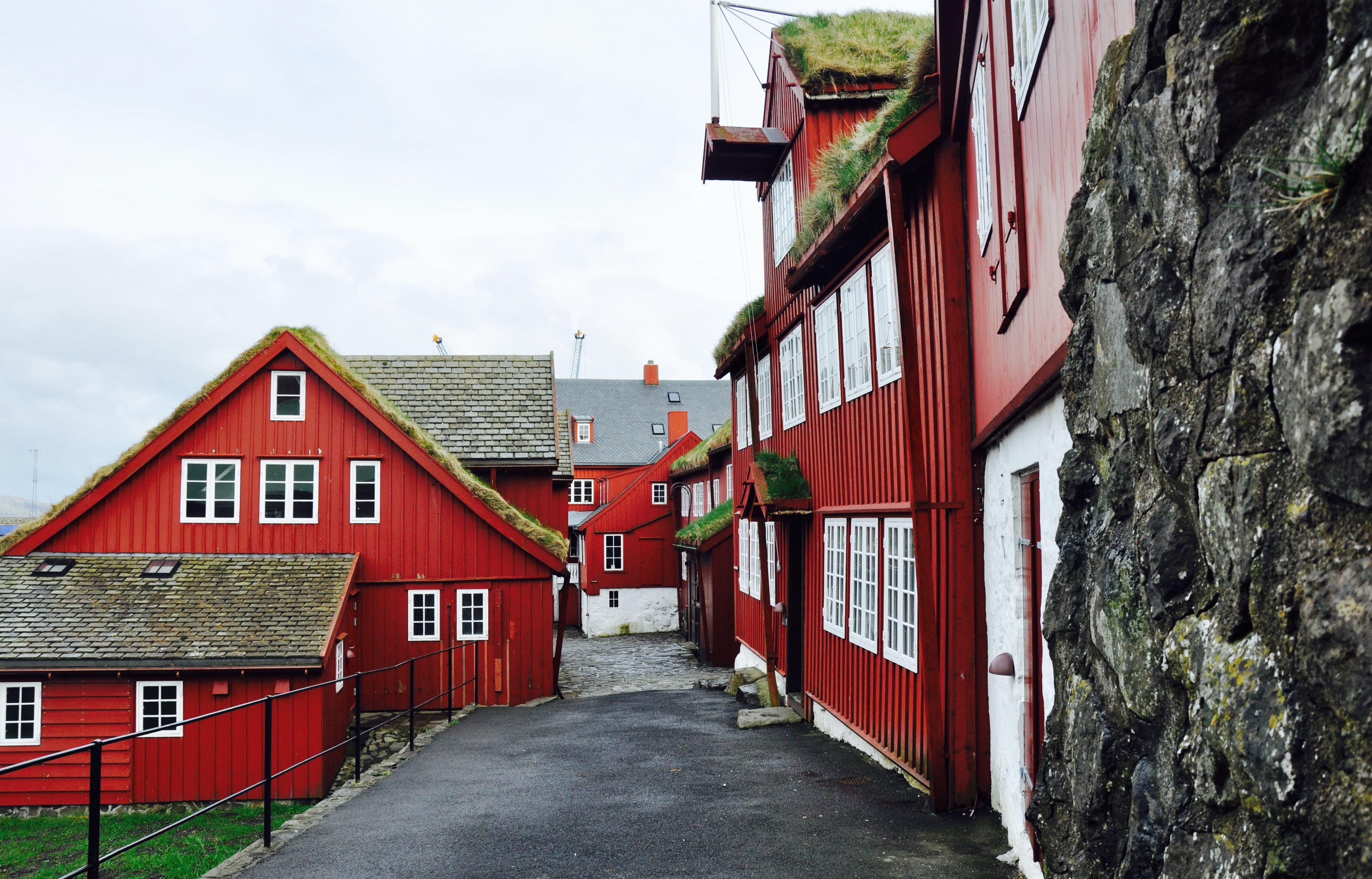
The fish market on the quayside is also worth a look, and you may be able to blag a sample or two. There are plenty of cafes and a burgeoning bar scene; I can vouch for the hot chocolate in Kafe Husid and a beer in Mikkeller. There are also a clutch of good eateries in town including the excellent Barbara Fish Restaurant, where the broth for its bouillebaisse is poured from a vintage china teapot and the deconstructed lemon meringue pie is to die for.
KOKS
KOKS, the first Michelin-starred restaurant in the Faroe Islands, deserves its own entry. An evening here doesn’t come cheap – the tasting menu is an eye-watering DKK 1400 (about £165) with the wine pairings another DKK 1100 (approximately £130) on top. It might just be the most memorable and adventurous meal you ever eat, however, and is not to be missed. Your evening begins in a lakeside hjallur, or drying house, with some tasty nibbles of fermented lamb and dried kingfish. Next, you jump on a Land Rover for the short hop up the hill to the restaurant itself (this is not a restaurant for posh heels). From the opener of scallops served in a shell encrusted with live and very wriggly barnacles to the final mouthwatering dulse (red seaweed) and blueberry dessert, it was incredible.
Kirkjubøur
The historic village of Kirkjubøur is home to the ruins of St Magnus Cathedral, the largest mediaeval building in the Faroes. Next door, is the simple but beautiful whitewashed church of St Olav which dates from the early 12th century. It’s still in use today and 17th generation farmer and churchwarden Jóannes Patursson rings the bell to announce a service. Opposite, lies the oldest inhabited wooden house in Europe, the 11th century Roykstovan farmhouse built from stone and logs weatherproofed with black tar. It began its days in Norway, before being dismantled and shipped to its present location. Today it remains the Paturssons’ family home and is fascinating to visit. On the walls hang traditional whaling equipment, now obselete; Jóannes will explain and defend the long tradition of hunting pilot whales if asked. Whatever your personal views, it’s interesting to hear a Faroese take on the practice.
Saksun
To reach the tiny village of Saksun, you’ll need your own transport (or be up for a lengthy hike) but the reward is a super hike alongside a tidal lagoon to the sea. The folk museum within the Dúvugarðar sheep farm is managed by the farmer himself who apparently isn’t too keen on tourists visiting, so don’t plan on gaining access. The setting’s the star here, though, and you won’t be disappointed by the walk along a sheltered, sandy beach hemmed in by steep cliffs. At low tide, and in good weather, it’s surely got to be one of the prettiest spots in the country. I visited in the pouring rain and on a rising tide. Despite the low cloud and the slightly wet feet it was still worth the effort.
Vestmanna
Weather killed my boat trip to the Vestmanna bird cliffs but I’m told the sight of the towering rockfaces crammed with puffins, guillemots and razorbills is an impressive one. If rain stops play as it did for me, the SagaMuseum, housed inside the tourist information centre, is an interesting detour, if a bloodthirsty one. Prepare for some pretty explicit waxworks; the creators didn’t hold back when telling the stories from the sagas of the Faroes’ Viking past. Decapitation, torture and drowning are all depicted in the gruesome exhibits. An audio guide is a must to learn about the fascinating tales behind the exhibits.
And beyond…
Even if you’re only in the Faroes for a long weekend, Sandoy and Streymoy are only a half an hour apart by ferry so it’s a tempting excursion from Tórshavn.

Vast empty beaches lined with sea stacks and grazed by sheep who munch on the plentiful seaweed are a big draw, even in the shoulder season. Quaint harbours full of colourful fishing boats, yarn-bombed rocks and even the odd art gallery all offer pleasant diversions. With more time you can journey further afield to the other islands. Highlights include Hans Pauli Olsen’s sculpture of the seal woman on Kalsoy, picturesque Gjógv – the most northerly village on the island of Eysturoy – and a solitary hike to the lighthouse at the end of the the islet of Mykineshólmur on Mykines, an island where puffins greatly outnumber people.
Planning
I bought the Bradt guide to the Faroe Islands a month or so before I travelled and as ever, it’s an informative and eminently readable guide. If you are planning an independent visit to the Faroe Islands it will be invaluable to your preparations.
Thanks
I travelled to the Faroe Islands on a press trip as a guest of Atlantic Airways who were efficient, friendly and best of all laid back about seat swaps so we could all grab a window seat. Visit Faroe Islands and Visit Sandoy arranged a diverse and memorable itinerary, so much so that I’m already planning a return visit at some point in the not so distant future. Their accommodation choices, the Hotel Føroyar overlooking Tórshavn and the Hotel Sandavik on Sandoy, were comfortable, contemporary and classically Scandinavian.

Though I paid for my connecting flight, I’m grateful to Holiday Extras for taking care of my airport parking at London Stansted, particularly as they chose the very convenient Short Stay Premium option.
To recline or not to recline?
That is the question that has provoked a storm of impassioned comments this week after the Telegraph announced that British Airways was introducing 35 new planes on its short haul routes with non-reclining seats. Here’s the original article:
The ensuing headlines screamed that BA was fast turning into a low-cost carrier, but that’s not what people have been arguing about. A survey by Skyscanner in 2013 claimed that 91% were in favour of banning reclining seats on short haul flights:
https://www.skyscanner.net/news/calling-time-reclined-airline-seats

Reclining seats on long haul planes are a boon, particularly on overnighters. Economy class is cramped, and let’s face it, we’d all happily upgrade if funds permitted. But for many of us, the choice is to fly economy or not fly at all, so we fold up our legs and get on with it. It’s one of the few times when I wish I was young again. The ability of millennials to tuck themselves up and nod off to sleep for eight straight hours is something I now struggle to achieve in a full sized double, let alone a tiny aeroplane seat.
But that whole cramped arrangement gets a whole lot worse when someone in front reclines their seat into the space in front of my knees. I’m not especially tall, but I do have long legs, so a battering to the kneecaps is a real possibility. I pity 6 footers. I read this week that one man was left with bleeding knees after someone reclined without warning. It’s all very well saying that you have the right to use the space – after all, you’ve paid for that seat, recline and all – but if someone is going to get hurt in the process, surely there’s room for some give and take?
In the States, planes have even been forced to divert over legroom wars. This report from the Telegraph written in 2014 refers to the Knee Defender, a product that’s still on sale, as the trigger for an air rage incident that necessitated an unscheduled landing.
http://www.telegraph.co.uk/news/aviation/11064259/Knee-defender-causing-chaos-on-flights.html
Surely it’s better to put up with a bit of discomfort than to have your travel plans severely disrupted – and even face charges? It’s a shared space; there has to be a bit of give and take. I don’t expect someone to turn round and ask my permission to recline, but but I do appreciate it when they do so slowly so I have chance to grab my drink and rearrange my legs first. Likewise, while it’s perfectly OK in my book to recline on a long haul flight, I don’t expect to be eating my meal with no space for a tray table and so always ask the flight attendant to have a word with the person in front if they haven’t yet reclined.

But on short haul flights, is it really even necessary to have the facility to recline? Perhaps I’ve been conditioned after years of flying with Ryanair, but I just don’t even think about it on a short flight. I’m hopping over to Amsterdam this month and there’ll barely be enough time to sit down, let alone recline. Even on the longest short haul flights of around four hours, it’s not really a hardship to sit up straight. If I’m stiff, I can walk around the cabin to stretch my legs. However, for those hubbing through Heathrow, they’ve already come off one flight and don’t need the discomfort of a cramped second leg.
So this news isn’t a deal breaker for my relationship with BA. And of course, no one’s forcing anyone to fly BA. You can choose not to do so and opt for a different carrier. That said, you probably won’t find yourself sat next to me on BA any time soon, not least on one of their short haul routes. It’s not the cull on free food or even the IT disasters that have left passengers stranded. No, it’s price. The budgets are still usually cheaper, even more so for me when I factor in the additional cost of getting to Heathrow over Stansted.

But for those banging on about reclining seats, well, I think it’s the shape of things to come. Airlines have been forced to change to stay in business. The rise and continued popularity of the low cost carriers prove that people are happy to unpackage their fares and pay only for what they need. I think BA’s making a smart decision to ditch the reclining seats and make room for additional paying passengers. But will you be one of them?
Review of Thomas Cook Airlines
I’m no stranger to low cost flying, but it’s been a long time since I’ve flown with an airline which made its name catering for package tourists. So what’s it like to fly Thomas Cook Airlines?

Timing
I chose to fly to Cape Verde, and at the time of booking, I was flexible about which of its nine inhabited islands I would fly to. The only direct flights from London were with Tui (formerly Thomson) and Thomas Cook Airlines. I could have flown with scheduled airlines but it would have meant an indirect flight, such as with TAP via Lisbon. The flight times were convenient too, with an 8.05am outbound option and a 2.45pm inbound flight. Flying on a Wednesday worked for me, though to get a daily flight option I’d have needed to fly indirect. From LGW Thomas Cook Airlines fly in winter; in summer the only flights offered depart from Manchester. But with November temperatures in the late twenties, the islands are a good choice for a winter break, if a little windy.
Additional costs
Though the base fare was reasonable – and even more so now November is almost over – the airline’s pricing model worked on getting its passengers to pay for add-ons. Some of these prices were pretty steep. £10 for each sector secured you a hot meal, a suitcase was £25 each way and allocated seating cost from £13 per leg. I opted just to take a suitcase, given that the carry-on dimensions (55cm x 40cm x 20cm) and, especially, weight limits (6kg) weren’t sufficiently generous for a week-long holiday. This would be higher on the all-inclusive Economy Plus tariff but the price difference was significant, making it poor value for money. I didn’t choose the seat allocation and was randomly allocated a middle seat in each direction. A polite request with the check-in staff got this changed to an aisle seat both ways, but of course this can’t be guaranteed.
On-board service and comfort
The Sal flight operated on an Airbus 321. Legroom was 28″, 2″ less than on a Ryanair short haul flight. On this six-hour mid-haul flight, that’s cramped, and I was glad of the aisle seat to be able to get up and stretch my legs frequently without disturbing other passengers. Service on board was excellent, the cabin crew without exception polite and professional. Ground staff also conducted themselves well. Many travellers were on package holidays and thus met by a member of the Thomas Cook team, but as I had booked a flight-only option I had no interaction in this respect.
Other information
There’s an entry visa requirement for UK travellers headed to Cape Verde and this currently can be purchased for €25 on arrival. So long as Advanced Passenger Information (API) is completed via the Thomas Cook website 7 days or more in advance, this is paid for by the airline even if you are on a flight-only booking. There’s no need to queue at the visa desk on arrival, saving you time when you get there.
The verdict
Would I travel with Thomas Cook Airlines again? I was impressed by their punctuality and professionalism. However, the lack of flexibility in their schedule and the steep cost of extras means this wouldn’t be an airline I’d consider travelling with again, unless like this route, all the scheduled options were indirect flights.
Why you should do your homework before booking a flight
I had an interesting conversation with a lady the other night about the financial situation of airlines. A number of airlines have made the news recently for the wrong reasons, including Monarch and its demise. Her take on things was that it would have been perfectly reasonable to book with them because they’d been around for so long and if you’d travelled with them before, it would be unnecessary to check them out because you would know they were OK.

Monarch Airlines plane by Andy Mitchell CC BY-SA 2.0 via Flickr
I had a different opinion. Monarch’s financial woes over the preceding few years had been well-documented in the press. Anyone doing even the most rudimentary of Google searches would have thrown up a number of articles filling out a picture of money troubles and the importance of the end of September deadline to renew its ATOL certificate. But given that hundreds of thousands of travellers were caught out, I’m guessing my expectation that people wouldn’t shell out hundreds of pounds without checking out the robustness of the company was inaccurate.
What’s also interesting is that following the whole Ryanair mismanagement debacle, many people assume that Ryanair is in a difficult position financially. According to industry business analysts, however, it’s not. The graphic on this link reveals that they think it’s in the best position of any European airline when it comes to the risk of going bankrupt:

If the Dow Jones researchers are to be believed, then it might be an idea to be think carefully before about booking a flight with Turkish Airlines or Pegasus at the moment. I’ve flown with both and had excellent experiences but last year business was difficult for both of them. The former posted a 2016 loss of $77 million, the latter $36.1 million. You can read more at:
http://atwonline.com/airline-financials/turkish-airlines-posts-77-million-net-loss-2016
http://atwonline.com/airline-financials/pegasus-airlines-posts-361-million-loss-2016
But then in the case of Finnair, they seem to be doing significantly better than their position on the chart would suggest. Though Dow Jones suggest they fall into the “In Trouble” category, this article appears to refute that speculation:
https://yle.fi/uutiset/osasto/news/finnair_announces_best-ever_quarterly_results/9899848
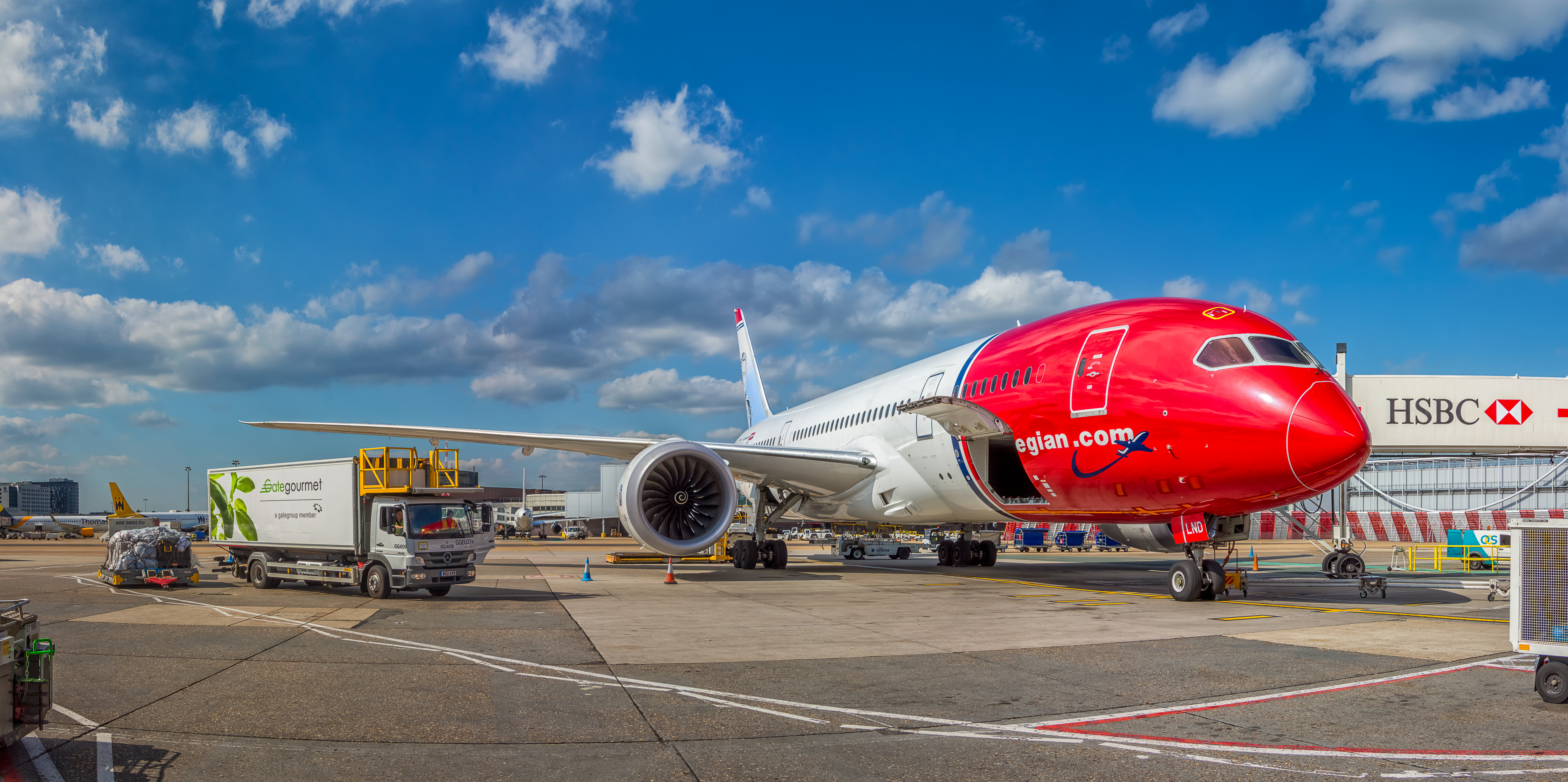
Norwegian Dreamliner by Juraj Patekar CC BY 2.0 via Wikimedia Commons
Personally, I’m being cautious over booking with Norwegian at the moment. Their rapid long-haul expansion is, in my book, cause for concern, given the history of low-cost airlines and trans-Atlantic flights in particular. I also wonder whether it’s a coincidence that after they announce the commencement of a London to Singapore route, Qantas cans their Dubai layover on their London to Sydney route and goes back to making Singapore their stopover destination.
Whatever your own take on the situation (and I’m not advising you to follow my lead), Norwegian Air currently have a lot of new planes to pay for and face plenty of competition. Norwegian Air’s CEO has been quick to counter that the airline is in good financial health, but this Reuters article also references the potential impact of their CFO quitting in the summer:

I’ll stick to my earlier assertion: if you’re planning on booking a flight, do a little research on your chosen airline first. Take the sensible precautions: make sure they’re ATOL protected where that applies (charters and packages in general terms), pay using a credit card as your outlay will be protected if the flight is over £100 and consider taking out scheduled airline failure insurance in situations where you wouldn’t be covered if you didn’t.
Just back from: a day trip to Venice
Regular readers of this blog will know how I’ve made a number of day trips by air to some of Europe’s most captivating cities. Yesterday saw me jet off to Venice, in perhaps my most ambitious trip yet.

You’ll find a full list of the others at the bottom of this post or on my Index page here:
https://juliamhammond.wordpress.com/index/
While I’m not suggesting for a minute you’re going to truly get under the skin of your chosen destination in such a short space of time, it is great when you have little or no holiday left but still have that pressing need to travel. Or in my case, a desire to keep two dogs out of kennels and into Daddy Day Care which is always a priority. If you believe those predicting Brexit will put an end to cheap European flights from the UK, time could be running out to snap up a bargain. Here’s the how, where, when and what of Venice in a day.
Getting there
My local airport is Stansted, the main UK base of Ryanair, and once again it was to the controversial budget carrier that I looked for my cheap fare. Normally, Ryanair flies in to Treviso airport, but while the airport has been closed for essential runway maintenance, flights are being rerouted to Marco Polo instead. Marco Polo also has the advantage of being closer to the city and well connected by both boat and bus. The current closure lasts until 18 October, but it’s worth keeping an eye out as it’s not the first time I’ve read flights have been diverted. My flight departed on time from Stansted at 0620 and touched down ten minutes ahead of schedule at 0910. The return left a few minutes after its scheduled departure time of 2230 and taxied to the terminal to unload us at 2355, about 15 minutes late. Total ticket cost this time was £34 return. I should also add, as per usual I didn’t bother with a seat reservation and got a randomly allocated window seat on the outbound flight and an aisle on the return leg.

To reach Venice from Marco Polo it’s possible to catch a bus. An express service takes around 20 minutes to make the journey to Piazzale Roma, near the top end of the Grand Canal and the city’s Santa Lucia station. Return tickets cost 15 euros. But to arrive in style, I figured I needed to arrive by boat, though my budget most certainly doesn’t stretch to water taxis. There are, however, direct transfers from the airport with Alilaguna who offer a reliable service on one of three routes. This is double the price of the bus at 30 euros for a return, but in my mind well worth the cost. However, I should mention you do sit low in the boat, which isn’t great for sightseeing if you aren’t tall.

I opted for the orange route as it takes you via Cannaregio and then down the Grand Canal. Journey time to the Rialto Bridge was just under an hour. From there, the boat continues down to Santa Maria del Giglio, just short of St Mark’s. It was busy, and I had to wait for one boat to leave before getting on the second one, which added about a 30 minute delay to my journey. However, the boats serving the blue route were bigger and there wasn’t a wait. They loop via Murano and Giudecca instead, and calling at San Marco on the way. This is a really convenient option if seeing Murano’s famous glass is on your wishlist. However, it does take about 90 minutes to get to San Marco and it doesn’t transit the Grand Canal. The way I see it is that this transfer is part of your day out rather than just transport, but if time is the priority then the bus is a no-brainer.

Note: From Treviso, an airport bus scheduled to coincide with arrivals takes around 70 minutes to reach Piazzale Roma. Make sure that you’re on the ATVO bus and not the Barzi bus as the latter calls at Mestre station rather than Santa Lucia (requiring a second train journey to get to the city) and also Tronchetto Island which is again inconvenient for Venice’s top attractions.
The links you’ll need (including timetables, fares and maps):
ACTV bus and city boats: http://actv.avmspa.it/en
Ailaguna boat: http://www.alilaguna.it/en

Getting around
Venice is time-consuming to get around, which is why I refer to this as my most ambitious day trip to date. Because of the lack of roads, you either have to walk or take to the city’s canals. It’s a pleasure to wander on foot, but the downside is that many alleyways are dead ends leading to canals or courtyards. Without a good map (or even with one) you’re likely to get lost. I relied on a combination of paper map, Google map navigation on my phone and a general sense of direction.
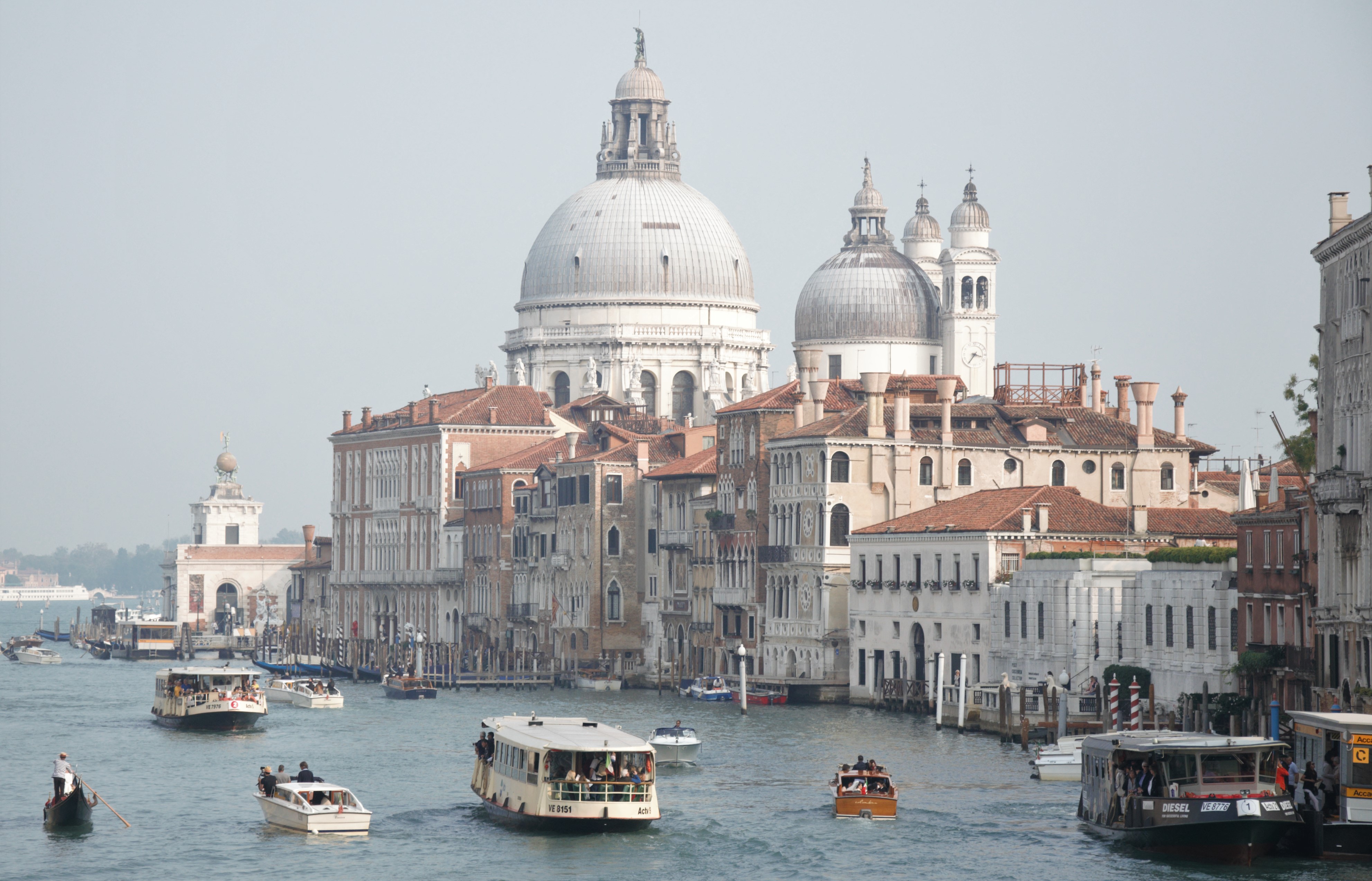
Those of you who know me will realise the latter is pretty much non-existent. Narrow streets and a maze of densely packed buildings mean that sometimes Google maps don’t quite have your location right. I also struggled with night mode, as the canals and alleys have almost no contrast – the waterways are such an essential aid to navigation that I switched it back to day mode. Fortunately even with very limited Italian, people were helpful to my pitiful “Scusi, dove Rialto Bridge?” attempts at conversation and pointed me in the right direction with a smile.
There has been a lot in the press about how residents are fed up with the city being overrun by tourists; the historic centre’s residential population numbers only 55,000 now, compared to an estimated 28 million visitors annually. Do the maths: that’s more tourists per day than the number who actually live there. Whether it was because I visited in the quieter shoulder season or whether such irritation has been exaggerated in the press, I didn’t see any indication of frustration with tourists invading locals’ space. But it’s certainly not an issue to brush under the carpet.

Due to the unhappy marriage of being time-poor and totally incompetent at map reading, I decided to splurge on a day pass for the city’s ACTV boats. This cost 20 euros and can be purchased at the many ticket booths near the jetties. (The jetties themselves are easy to spot being a) near the bigger canals and b) on account of their bright yellow livery as in the photo below.) You do have to validate the pass before you step onto a floating jetty, or risk a hefty fine. Look for a white oval terminal as you step off dry land and tap the card against it. I got my money’s worth hopping on and off, but you’ll need to make several journeys to cover your outlay.

Things to do
With so many sights to choose from, whittling down what’s easily a month’s worth of sightseeing into the nine hours I had in central Venice was tricky to say the least. It helped that this was my third trip to Venice, so I’d already seen the main attractions and (fortunately for me) years ago, well before selfie sticks had been invented. I was also keen to test out the new policy of the Venice authorities which is to encourage people to explore off the beaten track. You’ll find a wide choice of suggestions here (when they first pop up, you might think they’re written only in Italian but they’re actually dual language with English too):
http://www.veneziaunica.it/en/content/itineraries
I began my day by alighting at the Rialto Bridge boat jetty and crossing the bridge itself to the adjacent market. Originally the market moved to this location in 1097, but a 16th century fire destroyed almost everything in the vicinity. The market was rebuilt and despite being a stone’s throw from the tourist crap which lines the bridge and its environs, manages to retain more than a little of its charm. There’s plenty to see, including more varieties of mushrooms than you could ever expect to see back home, capsicums done up like posies of flowers plus of course a pungent but vibrant fish market.

There’s a treat tucked around the back of the market in a hard to find alley (even with the address, Sestiere San Polo 429, it was concealed so well it took me a while to find either of its two doors) What I’m referring to is Cantina do Mori, the bacaro which claims to be the oldest in Venice. This tiny bar whose ceiling is hung with dozens of copper pots still retains a customer base who are happy to share their local with tourists like me. It’s been around since 1462 and once counted the infamous lothario Casanova among its clientele. Today, it’s still a popular place to go and have an ombra (Venetian slang for glass of wine) and soak up the alcohol with some cicheti (or in English, cicchetti), the Venetian equivalent to Spanish tapas.
Eventually, I prised myself away from the bar and its surroundings. I decided first to take a stroll in search of Venice’s narrowest street. Calle Varisco is just 53cm at the little end, though mercifully for pedestrian flow, it widens as you walk down. If I’m honest, I was a little underwhelmed; several properties off the street were having work done and there was a fair bit of rubbish around as a result. Forget what you’ve read: it’s not the narrowest street in the world (that’s a German one) and it’s not even close to being the slimmest in Italy.

Moving on, I headed north and picked up a boat which looped around the Castello district to bring me to the San Zaccaria stop. I was hoping to see if the church’s flooded crypt was underwater, but it closes from 12 noon until 4pm each afternoon so was out of luck. Nearby though, I passed Banco-Lotto No. 10 which sells clothing made by inmates at the women’s penitentiary on Giudecca Island. Sadly, that too was closed, though it shouldn’t have been according to the sign on its doorway. The clothes looked fabulous, even for someone with my limited fashionista skills.

Next up was a bookstore, and one which proves that Amazon can’t provide everything. The Libreria Alta Acqua is a treasure. Books stacked in precarious piles fill every inch of available space. Balanced on shelves, filling redundant gondolas and bath tubs, they represent what a bookstore should be.
This is a place to be savoured, to potter and to forget the time or anything else on your mind. The store owner wandered about, leaving the rather scary looking cat to mind the till while he wheezed and tutted to himself looking for items unspecified but clearly important. I think I could have watched him all day too. Out back was the tinest of courtyards with a sign imploring people to climb up some wobbly stairs made of old books to see the view over the canal.
I couldn’t resist walking south via St Mark’s Square. This might sound odd as I really hate the crowds and the tourist paraphernalia but I think I wanted to see just how bad it was. On the way, in Calle del Mondo Novo, my nose caught the aroma of a cheese and ham store as my eye was drawn to a pig in the pizza shop window opposite. Incidentally, I read that you should never eat pizza in Venice as wood-fired ovens are banned with just a tiny handful of exceptions. The store, Prosciutto e Parmigiano, is known locally as Latteria Senigaglia (that was the name of the original family-run dairy produce store which was set up in 1940).
In St Mark’s Square, I navigated a sea of people who couldn’t have been more synchronised in pointing their mobile phones towards whatever their guide was pointing out had a musical soundtrack been in place. Pausing only to recreate the famous shot of the gondolas lined up facing out across the lagoon, I hopped on another vaporetto. This one was bound for the church of San Giorgio Maggiore. From the top of its belltower, or campanile as they’re called, the views across the city are splendid and of course you look out over the campanile in St Mark’s Square rather than from it. It costs 6 euros to ascend, but for that they provide a lift, and free entertainment when the bells chime the hour, frightening unsuspecting visitors. Best of all – no queues.

It was mid-afternoon and I wanted to explore a little more before I left, so I took a boat a short way up Canale della Giudecca, jumping off at Spirito Santo church to cut back through to the Grand Canal near the Peggy Guggenheim art collection. Another vaporetto took me to Venice Casino from where I could cut through to the district of Cannaregio. This is on the Venice authorities’ recommendations list and is where you’ll find the Jewish Ghetto. It lacked the crowds of St Mark’s and it’s probably very uncharitable of me to hope that the city’s campaign is unsuccessful and it stays that way.
I had planned to have an early dinner in Osteria al Bacco, which is one of the area’s most highly rated restaurants, but got sidetracked by the wonderful Al Timon instead. You do need to book ahead for dinner reservations, though they don’t always serve what they display in the window. Get there right on the dot of six when they open to grab a table for cicheti and a Spritz – for something classically Venetian, swap the fashionable Aperol for Campari.
Time was ticking on so I took a last vaporetto ride along the Grand Canal and then bought a ticket for the boat back to the airport. I’d definitely recommend a visit outside of summer and most importantly, away from the crowd. Venice is never going to be one of my favourite cities, but it’s growing on me.

The other day trips by air:
Ibiza
https://juliamhammond.wordpress.com/2017/05/13/just-back-from-a-day-in-ibiza/
Copenhagen Christmas markets
https://juliamhammond.wordpress.com/2016/12/05/just-back-from-a-day-at-copenhagens-christmas-markets/
Regensburg
https://juliamhammond.wordpress.com/2016/11/25/just-back-from-a-day-trip-to-regensburg/
Belfast
https://juliamhammond.wordpress.com/2016/10/17/just-back-from-a-day-trip-to-belfast/
Budapest
https://juliamhammond.wordpress.com/2016/10/07/just-back-from-a-day-in-budapest/
Bremen
https://juliamhammond.wordpress.com/2016/06/07/just-back-from-a-day-trip-to-bremen/
Lisbon
https://juliamhammond.wordpress.com/2014/10/20/just-back-from-a-day-trip-to-lisbon/
Amsterdam
https://juliamhammond.wordpress.com/2015/01/26/just-back-from-a-day-trip-to-amsterdam/
Monarch’s collapse: your rights
Sadly, this morning’s headlines that Monarch has collapsed wasn’t shock news. The company had been in trouble for years, with several bailouts brinking it back from the brink of collapse on more than one occasion. Once, it cleaned up on routes to Tunisia, Turkey and Egypt, but had been badly hit by the slump in tourist numbers to those destinations in the face of terrorist attacks. Its Greek business was hit by the economic crisis and in response, it turned to the saturated markets of Spain to try to balance the budget.
It’s the largest UK airline ever to fail. That’s no consolation for the estimated 110,000 people stranded or left with their holiday plans in tatters. This collapse affects at least a further 300,000 people who are due to fly, perhaps more.

What to do if you’re on holiday with Monarch right now
Sit tight. For those booked with Monarch Holidays, the CAA are negotiating with hotels so that you can stay. If you are asked to pay a bill, keep receipts. The CAA are saying they will reimburse you, though the end date for this is uncertain as yet. If you are due to fly home, the CAA are putting on flights to get you home.
A webpage has been set up by the CAA to provide information to travellers. Find it here:
On this website there are details of flight rebookings. Click on the airport you are travelling back from and it will open up the flight number and timing of your new flight. At present, just today’s flights are up, so if you’re due to travel in the next few days, you’ll have to check back later.
If you’re in the UK but have a future Monarch flight or package holiday booked
The CAA’s advice is repeated here:
Flights booked directly with Monarch Airlines from 15 December 2016 onward
Customers with these bookings are not ATOL protected and are not entitled to make a claim to the CAA. You are advised to contact your card issuer, insurer or PayPal for advice on how to claim a refund.
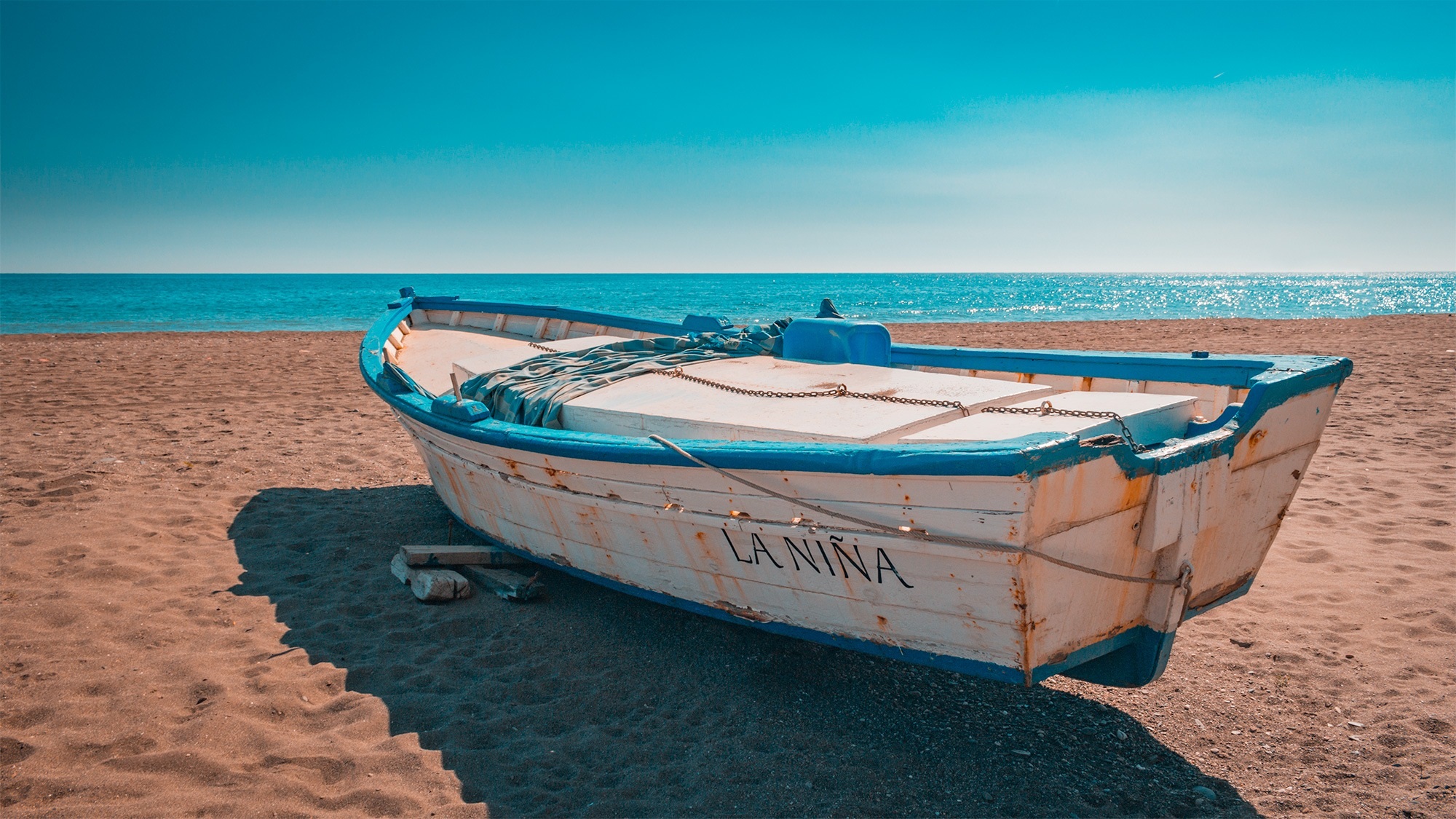
I add: if you have booked using a credit card and the cost of your flight is £100 or more, you are covered. (If you book a return flight, the cost of the total must be over £100, i.e. each leg can be under £100 so long as when combined they’re over.) The credit card company will reimburse you. If you have booked with a debit card, you might be able to get your money back via something called Chargeback; contact your issuing bank for details. If you have specific cover for airline failure in your travel insurance policy, this is also a route for recovering your money. Note that this isn’t a standard clause on many insurance policies.
Back to the CAA:
Flights booked on or before 14 December 2016 directly with First Aviation Ltd trading as Monarch Airlines
If your flight was booked with Monarch Airlines on or before 14 December 2016 and you received an ATOL Certificate stating that your flight is protected with First Aviation, you are ATOL protected. We are making arrangements for refunds to be made as soon as possible to these UK customers.
We will be providing more information on how you should claim shortly. You will be able to submit a claim when we make the Monarch claim form available. Please do not submit a claim until advised to do so.
Bookings made directly with Monarch Airlines from 15 December 2016 onward are not protected by ATOL.

I add: ATOL protection refers to the Air Travel Organiser’s Licence. Basically it ensures you don’t lose your money or get stranded abroad if the company responsible for getting you home goes bust. You receive an ATOL certificate with your holiday paperwork. What happens is that companies lodge money with the CAA in case the CAA has to step in and get their passengers home. Monarch’s ATOL licence ran out on September 30th and as they couldn’t afford to renew it, they were forced to call in the liquidators.
If the ATOL-bonded company goes bust, you apply directly to ATOL for your refund. The CAA website explains what to do, as reproduced here:
Holidays booked directly with Monarch Holidays
Customers booked directly with Monarch Holidays are ATOL protected and will have received an ATOL Certificate when they made their booking. We are making arrangements for refunds to be made on these bookings as soon as possible, and we aim to complete this by the end of 2017 at the latest. We will be providing more information on how you should claim shortly. You will be able to submit a claim when we make the Monarch claim form available. Please do not submit a claim until you are advised to do so.
Monarch flights and Monarch Holidays booked through another travel company or travel agent
If you booked a flight or holiday with another travel company or travel agent you should contact them directly about your arrangements.
What to do if you’re impacted by Ryanair’s cancellations
If you’re affected by Ryanair’s announcement that they are cancelling many hundreds of flights over the next six weeks, you’re going to need to know your rights. This is how the news broke:

If your outbound flight has been cancelled at short notice:
First, see if you can rebook. According to Ryanair’s website, this should be possible online. People are reporting on social media that the Ryanair helplines are overwhelmed and they’re not able to complete a rebooking over the phone. Obviously with so many people chasing so few seats at short notice, many are going to be disappointed. So what then?
If you cannot find a satisfactory rebooking (e.g. your flight is being rebooked but so late into your holiday to make it as good as useless) then you’ll need to apply for a refund. You may also be entitled to compensation. These are your rights under EU law if the destination is within the EU or if it’s an EU carrier like Ryanair:
Flight cancellation
Flights under 1500km – 250 euros compensation
Flights over 1500km – 400 euros compensation
Note: this only covers you if your cancellation occurs 14 days or less before your flight. If you are due to travel in more than 14 days’ time and your flight is cancelled, this will be treated by the airline as a rebooking or rerouting. You still have the right to cancel with a full refund of what you paid for the flights, but will not be eligible for additional compensation.
Delayed arrival whether with Ryanair or alternative carrier
Flights under 1500km – 2 hours
Flights over 1500km – 3 hours
If you are delayed, you are also entitled to food and accommodation vouchers. Full details here:
http://eur-lex.europa.eu/legal-content/EN/TXT/?uri=LEGISSUM:l24173
Note that it can take many months to secure this compensation, despite EU regulations stating refunds must be paid within a week. Remember you will need to keep all receipts and boarding passes. It’s also a good idea to send letters recorded delivery if you are getting nowhere by email.
If you decide not to travel, have a look at what expenses you’ll incur, such as accommodation that cannot be cancelled at short notice. The airline is not liable for this. It will need to be claimed back from your travel insurance company. Making a claim such as this doesn’t affect your right to EU compensation if applicable.

If you’re abroad and your inbound flight has been cancelled:
The above applies but you’ll also have to factor in whether you need to be back home as a matter of urgency or can afford the time and money (up front at least) to extend your trip. You might find it easier to deal with staff face to face at the airport though this can add to your stress as there will be a lot of other angry passengers there which isn’t going to make you feel better.
You can try to persuade the airline that rebooking you with an alternative carrier e.g. a seat on a rival airline is a better idea. You’ll have more bargaining power if the airline itself is very tight for space and is struggling to get you somewhere, especially if you’re stranded and they’re having to pay for your overnight accommodation. Remember if you pay for your own alternative flights, you’re out of pocket.
It can be very hard to get them to pay, as I found out with CityJet a few years ago. CityJet refunded their own flight (that they cancelled fifteen minutes before departure) but because I didn’t want to wait for an alternative with CityJet or spend another night in Paris even at their expense, I paid for the Eurostar alternative. I eventually funded it out of the compensation I received eight months later. Read the full story here:
https://juliamhammond.wordpress.com/2015/03/06/finally-a-win-against-cityjet/
If you can get through on a helpline, that is often better, but you will need to be patient. Be as calm, polite and flexible as you can, particularly if you need to get back home in a hurry. Remember the person on the phone isn’t directly to blame and venting your frustration isn’t going to get you anywhere.

If you’ve a flight coming up which is currently unaffected:
This currently is where most Ryanair passengers are, fortunately, and the social media furore should calm down for the most part now that people know where they stand. Nevertheless:
Have a Plan B. Research alternative airlines or other means of transport on the inbound leg. Check your email on a regular basis so that if your flight is next to be affected, you’re amongst the first to know – and fight for the seats that might be available on alternative flights.
Print out or save to your phone a copy of the EU regulations (see link above) so that there can be no dispute with airline staff about your rights – it will be in black and white.
Double check your travel insurance, especially the limits and excesses for flight delays and flight cancellations. Again, keep all receipts and boarding passes as you’ll need them to make a claim. Keep proof of the cancellation.

What now?
Ryanair’s lack of consideration for their customers, though not a surprise, is still a concern. They won’t be the first and last airline to do this. I’ve had similar late in the day cancellations from American Airlines (weather related issues leading to a 48 hour delay in New York when I should have been in Nicaragua) and as mentioned, with CityJet (who didn’t even inform us the flight was cancelled, just checked us in as normal and quietly removed our flight from the departures board). But for the record, Ryanair, you need to remember who keeps your staff in a job and your planes in the air.
Update 17 September from the excellent Simon Calder at The Independent:
Update 18 September of full list of cancellations on the Ryanair website:
https://www.ryanair.com/ie/en/useful-info/help-centre/travel-updates/flight-cancellations7
Ryanair’s baggage changes penalise those already booked
Today Ryanair have announced that from 1st November, their policy on cabin baggage will change. Currently, up to two bags can be taken on board, one of standard dimensions (55cm x 40cm x 20cm) and one smaller item (35cm x 20cm x 20cm). Currently, a small wheelie fits and can be stowed in the overhead bins, while the smaller bag, perhaps a day sack, can be placed under the seat in front. On busy routes, some passengers are asked to place their larger bag in the hold free of charge.

Today Ryanair have announced changes to their policy. Basically, customers opting not to pay for Priority Boarding will lose the right to take some of their carry on with them as they board the plane, instead handing it to staff to put it in the hold.
I have two Ryanair flights coming up, one in October to Venice and one in December to Salzburg. My Salzburg flight will be affected by the changes. I was planning to take a bag that was smaller than their maximum dimensions but slightly larger than those of a smaller item. Now, I have to either rethink the size of that bag or pay a £6 priority boarding fee for each leg to be able to take the luggage I planned. The Ryanair website states that the policy will be introduced on 1st November for all travellers, regardless of when they’ve booked.
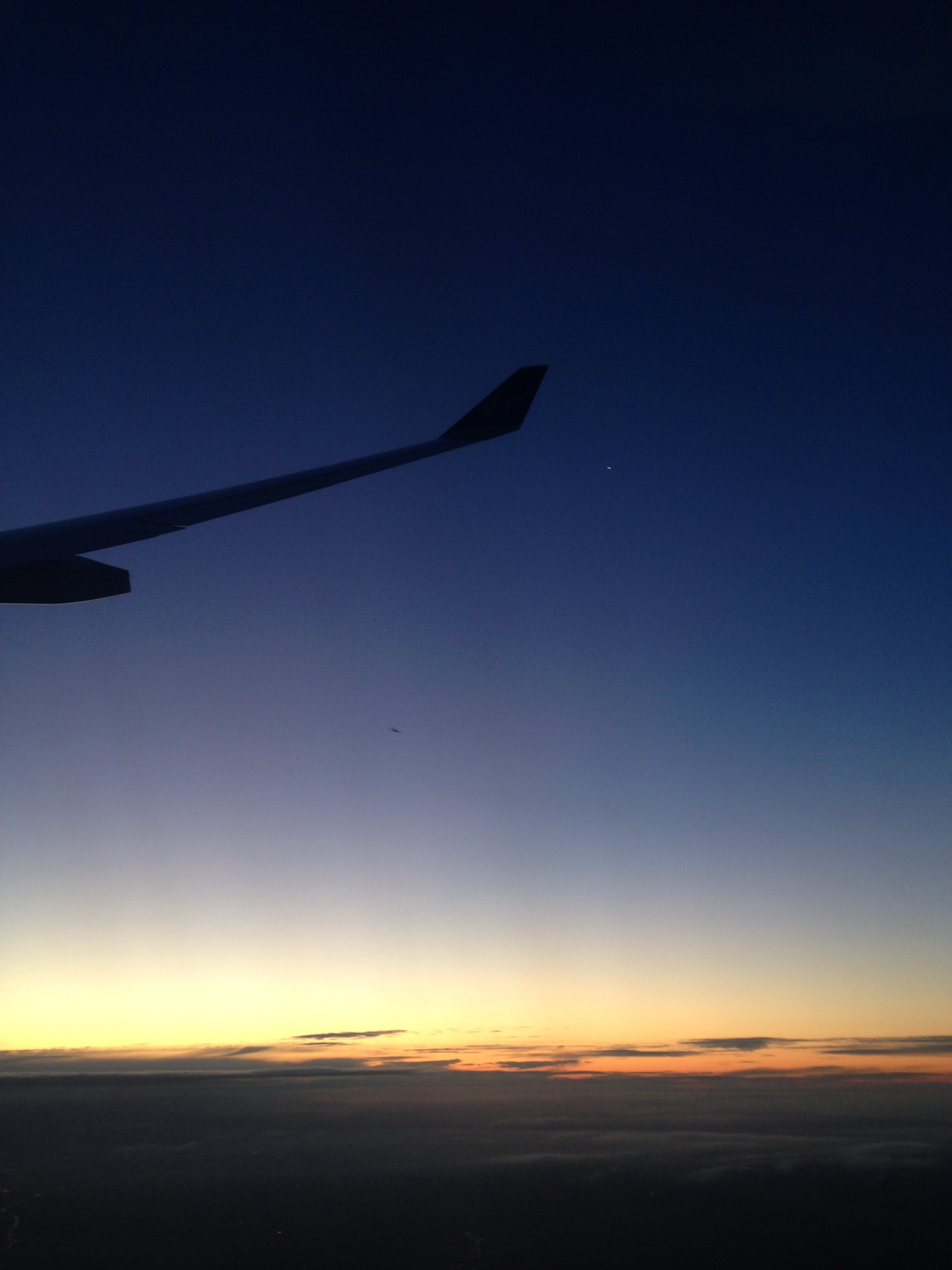
That’s not playing fair. We took out the contract and now the details are unilaterally being changed. If I take the bag I planned, and the policy is implemented as per the rules, I’ll either have to check it at the gate free of charge and incur a delay when I arrive waiting for luggage, or risk being denied boarding. So effectively, my flight has gone up by £12 if I wish to take the luggage I planned. Had I paid for Priority Boarding at the time of booking, it would have cost £5 each way; to do so retrospectively it will be £6 each way.

I understand why Ryanair have taken this step. The amount of luggage being dragged on board is reaching ridiculous levels and boarding is a much slower process because of it. But it does seem underhand to introduce a change to existing bookings without notice. Will this be the end of my love affair with Ryanair? Probably not. Do I feel like I’ve been cheated out of £12? Yes. The Ryanair haters are going to have a field day with this, and for once, rightly so.
Are you affected? Full details from Ryanair’s website here:
Border control queues in Europe – and how to beat them
Today’s news has been full of horror stories of British travellers caught up in excessive queues at some of Europe’s busiest airports. If you haven’t seen it, try this article from the BBC:
http://www.bbc.co.uk/news/uk-40824027
Sadly, though changes in legislation have worsened the situation, it’s nothing new. Miss your flight, and you’ll find the airline and the airport pass the blame back and forth, leaving you frustrated and potentially out of pocket. So what can you do?
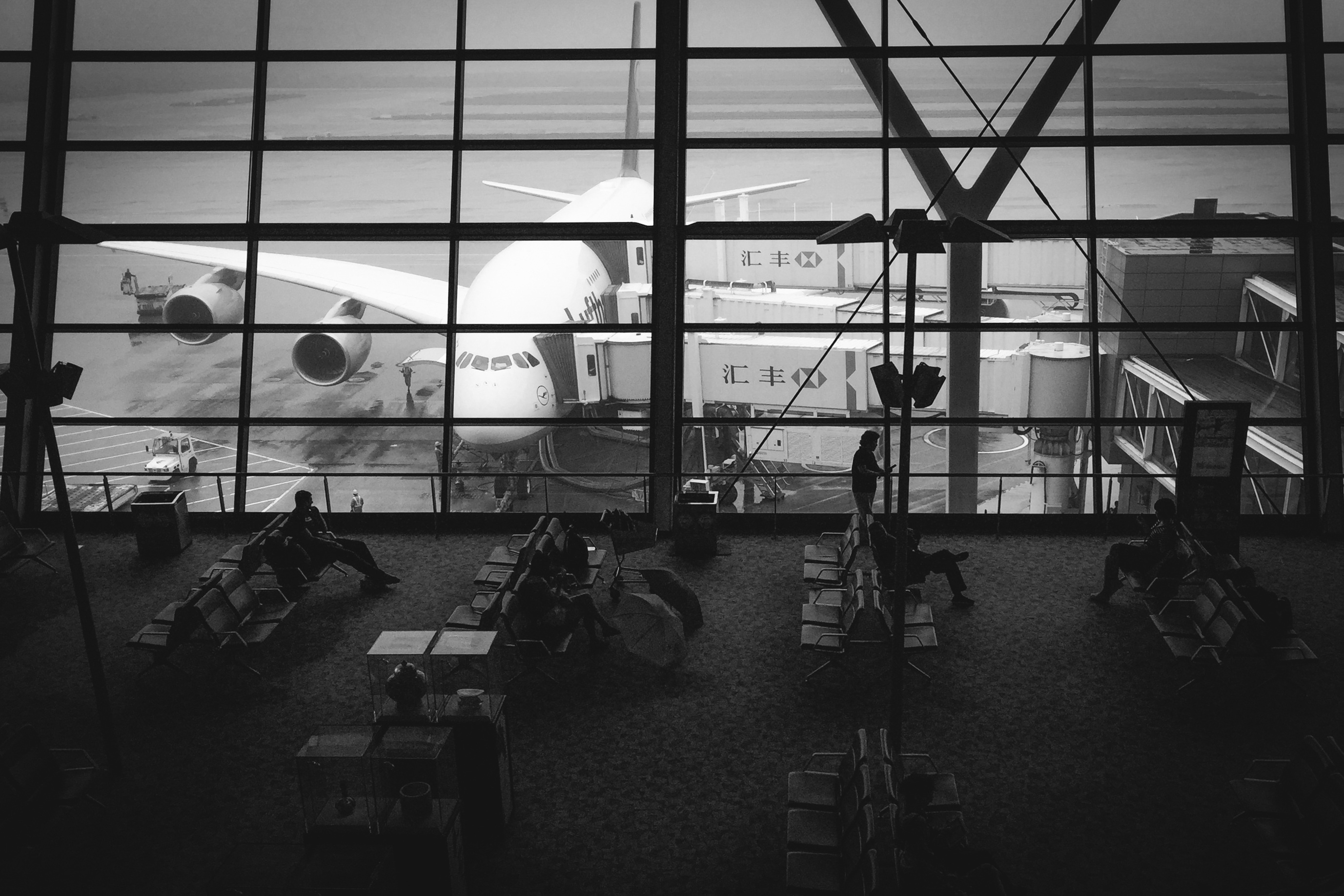
Take out a decent insurance policy
Many travel insurance policies will cover you for missed departures, but check the small print in case there are any exclusions. Also check the amount covered – and work out whether this is going to be sufficient to cover a night in a hotel and the cost of a replacement flight.
Get to the airport early – and don’t wait for your gate number to be displayed
Queues for security are going to be lengthy in peak summer season, so you should be aiming to get to the airport in plenty of the time regardless. But once you’re through security, you need to go through passport control too. In some airports, this can be tucked away in a quiet wing of the airport serving just a few gates.
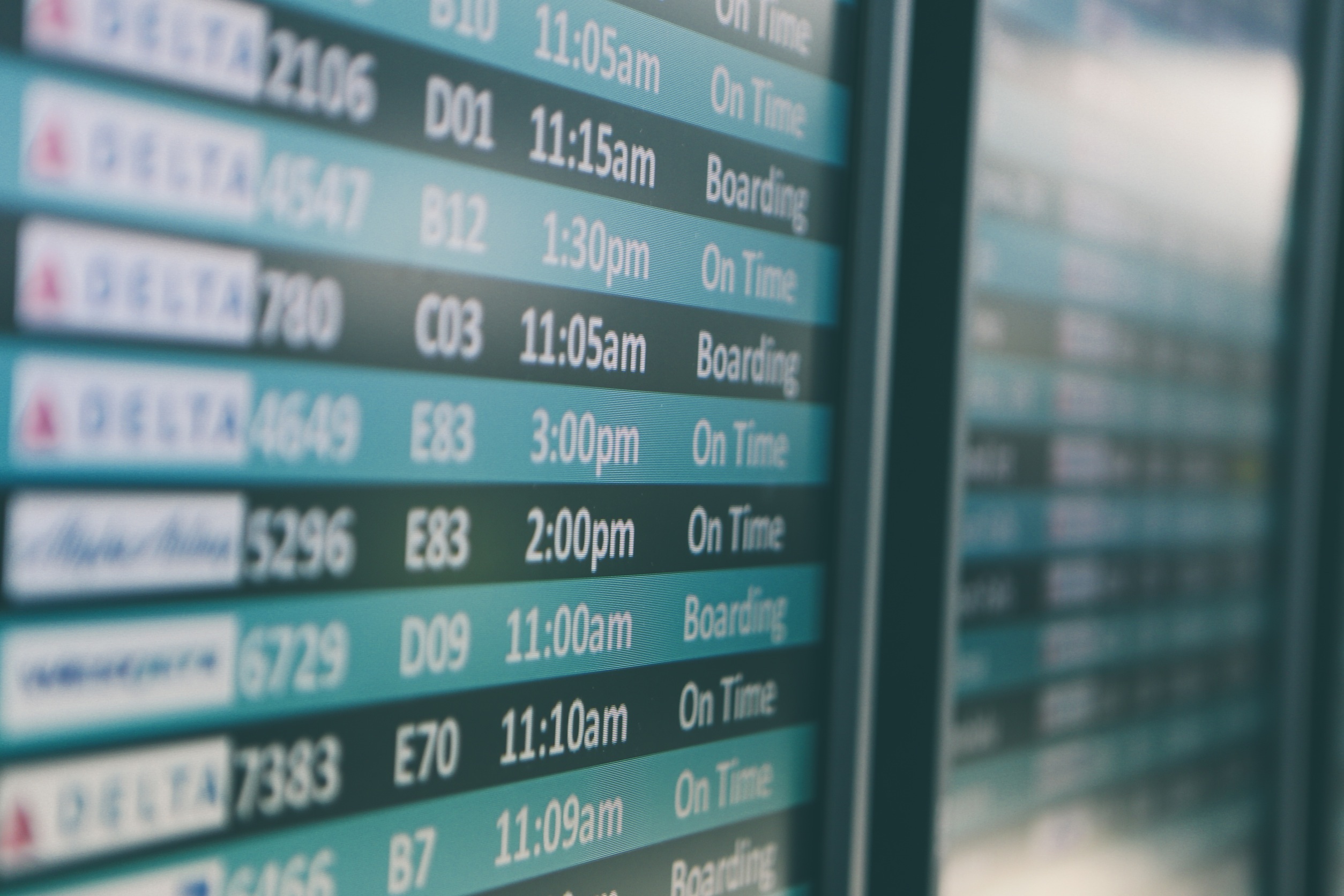
If your gate isn’t displayed early, by the time you start to line up, you may have cut it too fine. I almost missed a flight from Malaga to London a couple of years ago for this very reason – so don’t risk having to be very un-British and queue jump like I did. And if I pushed in front of you and you’re reading this, I’m very sorry – and hope you made your flight too!
My advice is to go through passport control even if your gate isn’t displayed on the boards – if there are multiple passport controls, in my experience the border control officials will redirect you. Just look suitably apologetic as I did and make sure you head off in the right direction.

Consider booking a package
If you book a package holiday with an operator with has its own fleet of planes, such as Thomson (other operators are available!), then the same company is responsible for getting you from the hotel to the airport and from the airport to Britain. At the very least this is going to reduce the buck-passing.
Have you any tales to tell? I’d love to hear your experiences.
Everything you need to know about flying
The title’s a bit of an exaggeration – at the very least a work in progress – but I’m in the process of creating an index for my blog posts. Here’s the first instalment. With years of independent travel under my belt there’s a lot of advice I can share about airlines and air travel. From finding business class flights at fares lower than economy to what to do if your flight is cancelled, there’s a blog to help.

Tips for saving money on flights
https://juliamhammond.wordpress.com/2014/10/15/nine-tips-to-save-money-on-flights-and-one-to-avoid/
Cabin baggage charges
https://juliamhammond.wordpress.com/2017/07/22/the-increasingly-thorny-issue-of-cabin-baggage/
What to do if you miss your flight
https://juliamhammond.wordpress.com/2016/07/27/what-to-do-if-you-miss-your-flight/
How to travel business class for the price of economy
https://juliamhammond.wordpress.com/2016/07/18/how-to-fly-business-class-for-the-price-of-economy/
Are business class flights really worth the extra?
https://juliamhammond.wordpress.com/2016/06/14/are-business-class-flights-really-worth-the-extra/
How to survive a long haul flight
https://juliamhammond.wordpress.com/2016/05/03/how-to-survive-a-long-haul-flight/
What’s it like to travel long haul on a budget airline?
https://juliamhammond.wordpress.com/2017/01/19/whats-it-like-to-travel-long-haul-on-a-budget-airline/
Thoughts on airports
https://juliamhammond.wordpress.com/2016/05/24/its-almost-time-to-go-to-the-airport/
Transport options from Heathrow to London
https://juliamhammond.wordpress.com/2015/12/07/how-to-get-the-best-out-of-a-heathrow-layover/
How to get the best from a Heathrow layover
https://juliamhammond.wordpress.com/2015/12/09/how-to-get-the-best-out-of-a-heathrow-layover-part-2/
Getting your money back if your flight is cancelled
https://juliamhammond.wordpress.com/2015/03/06/finally-a-win-against-cityjet/
The increasingly thorny issue of cabin baggage
Airline Jet2 are in the news this weekend, with an article in the Daily Mail highlighting their new policy of charging for guaranteed cabin baggage. You can read the article here:
http://www.dailymail.co.uk/news/article-4719308/Now-airlines-charge-bring-HAND-LUGGAGE.html

I was a little suspicious, given the propensity of the Daily Mail to be economical with the truth, so I did some fact checking. Buried within the Jet2 website, and revealed as far as I could see only after you have reserved flights and are well into the booking process, is the opportunity to pay extra to keep your bag with you:
Subject to availability, you can pre-book “guaranteed cabin baggage” for an extra charge, and if you have purchased this service, you will not be asked to put your hand baggage in the hold (unless it exceeds the weight and size requirements detailed above or operational requirements apply). If we require your guaranteed cabin baggage to go into the hold for operational requirements, you can contact customer services to arrange a refund for any charges which you have paid for this service.
I tried a sample booking of a flight from Stansted to Dubrovnik. The cost of ensuring your cabin baggage made it into the cabin with you (subject to those operational requirements not being necessary, of course) was £3 per person per leg, a little more than the £2.59 quoted in the Mail’s article.

Would you pay it?
I’m not sure I would. But then I’ve rarely taken a suitcase on board and instead prefer to check it or, better still, leave it behind. I find it irritating to wait while wheelie after wheelie bangs its way down the aisle, though with airlines charging to put such luggage in the hold, I can hardly blame those doing so. But this not only slows boarding, it often means that there’s too much luggage to fit. I’ve taken many a Ryanair flight – the airline guarantees only the first 90 carry on bags will make it on board – and watched it all kick off as people are asked (or not) to hand over their bags. My fairly small day pack has always made it on board, I presume because it can fit between my feet and wouldn’t have to be placed in the overhead bins.
Wizz Air, it would seem, have had to backtrack on their plans to charge for guaranteed larger sized cabin baggage. You can take on a bag of up to 42x32x25cm free of charge, but to carry on an item up to the maximum dimensions (55x40x23cm) there’s a price to pay. Until 29th October 2017, this can be anything from 10 to 20 euros according to the small print on their website (35 euros if you take care of business at the airport), but this add-on disappears after that date, supposedly incorporated into the price of your seat. Have Wizz caved under the pressure of customer complaints, I wonder?

At this point, you’re likely to be muttering things about budget airlines, but they’re not the only offenders. Increasingly, scheduled, so-called full service airlines are supplementing their fares with extra fees and charges. And when it comes to revenue “earned” by such add-ons, you might be surprised to learn who the worst offenders are:

Some airlines are worryingly reliant on additional revenue as a share of their total earnings. You can read the full report here:
http://www.telegraph.co.uk/travel/news/airlines-that-rely-most-on-extra-charges/
So, even on a scheduled airline, if I want to select my seat in advance (and even as a solo traveller I might, or risk being stuck in that middle seat that no one wants) I’m likely to have to pay for the privilege. At the moment at least, I’m not likely to have to hand over my carry on luggage but who knows how long that might last?
I don’t think we’ve seen the last of this. As travellers, if we’re determined to do so on as low a budget as possible, we’re going to have to think hard about what we really need to take with us. I shared my packing tips here:
https://juliamhammond.wordpress.com/2016/02/28/packing-tips-from-someone-who-learnt-the-hard-way-2/
Taking large suitcases will perhaps become a luxury rather than the norm. It will certainly be interesting to see if Jet2’s new policy lasts the distance, and if it does, whether other airlines will follow suit.
What are your views? Would you pay to ensure your bag comes on board with you or do you think it’s one rip-off too many? I’d love to hear what you think.
What you need to know about the US laptop ban
Much has been written in the press over the past week on the subject of a ban on larger electronics items entering the United States with airline passengers. Following on from the March policy shift in which inbound flights from certain Middle Eastern and North African destinations, there’s speculation that such a policy could be extended to European destinations.
What’s the current situation?
At present, passengers travelling to the US from ten airports are affected: Queen Alia International Airport (AMM), Cairo International Airport (CAI), Ataturk International Airport (IST), King Abdul-Aziz International Airport (JED), King Khalid International Airport (RUH), Kuwait International Airport (KWI), Mohammed V Airport (CMN), Hamad International Airport (DOH), Dubai International Airport (DXB) and Abu Dhabi International Airport (AUH).

Large electronics items, including laptops but also larger cameras like DSLRs and tablets such as the iPad, must be carried in the hold and cannot be taken on board the flight. How airlines are implementing this varies, but some are offering gate check in and secure packaging in the form of bubble wrap and cardboard boxes. This policy doesn’t extend to the return leg; flights departing the US for these ten airports are not subject to the same restrictions.
So why are people getting upset? Surely they can do without their gadgets for a few hours?
As talk grows about an extension to the ban, so too do certain worrying facts emerge. Many of these larger items are powered by lithium ion batteries, which up to now have been banned from the hold for safety reasons. They carry a risk of catching fire, something that could have disastrous consequences if unnoticed. The FAA itself stated its concerns in 2016:
There’s more here, from The Independent:
There’s also the issue of sensitive data on company laptops and directives from some businesses to their employees requiring them to keep such equipment on their person whilst travelling. For the regular tourist, it’s more a case of a lack of insurance. I might just about be able to cope without my iPad on a long flight if I went back to those old fashioned paperback things I used to lug around, but if the airline then loses my suitcase, my travel insurance policy won’t pay out. I really can’t afford to replace my DSLR if the lens gets smashed in transit. So, with a flight to Houston looming on Friday, I’ve been watching the TSA website and Twitter like a stalker.

So have they made a decision yet?
There were some misleading headlines last week, like this one in NYMag following a piece in The Daily Beast:
http://nymag.com/selectall/2017/05/laptops-banned-in-plane-cabin-on-flights-from-europe-to-u-s.html
Retweeted and quoted to within an inch of its life, The Daily Beast’s article, claiming an announcement would be made Thursday 11 May, sparked an angry reaction. In part, there was a touch of indignation along the lines of European nations being way too civilised to be lumped together with the Middle East.

But amidst all the fuss, some serious issues for the Americans began to be raised, not least the impact that it would have to the US economy and its tourism sector. This article from The Independent explains:
Yes, you read that right: 1 in 3 potential foreign tourists would think twice about going if this policy becomes a reality. I’m among them. I’d be seriously concerned about that fire risk, especially on such a long flight.
Here’s a follow up article, also from The Independent:
I’m hoping, as we get closer to my departure date, that even if the electronics ban is widened, the changes won’t take effect until after I’m there. Getting my valuables back to Blighty in one piece will be, as it has always been, down to me. But after that, much as it pains me to say given my love of the USA, I’d have to give it a miss, at least until the TSA came to its senses once more. It was reported that the TSA met with representatives of the US’ major airlines last Friday to see how a ban could be implemented; sources indicate that further meetings were to be held with EU personnel today. At the time of writing, there’s been no announcement.
Watch this space.
Update 18.5.17
Well as it turned out we didn’t have to wait too long for an update. Common sense has prevailed and the EU have persuaded the US authorities that widening the ban on larger electronics would be foolish:
http://www.bbc.co.uk/news/world-europe-39956968
The ban still exists for the ten Middle Eastern and North African airports, so think about your safety before you opt to fly. Happy travels!
Flight news: Honduras
While parts of Central America have been blessed with direct flights from Europe for some time, others have been a bit more disconnected. Honduras is one of those places. But now, with the launch of a weekly flight from Spain, it’s possible to get there a little quicker. When I visited Honduras a few years ago, getting there involved an overnight layover in Houston, adding both considerable time and expense to the journey. Air Europa’s flight from Madrid at first might appear to be less than ideal, arriving shortly before 5am in what was once the world’s worst hotspot for murders. (San Pedro Sula has now passed the Murder Capital of the World crown to the Venezuelan capital Caracas.) But this late departure means that a connecting ticket from the UK is possible and you no longer have to lose a day of your holiday just to get there.
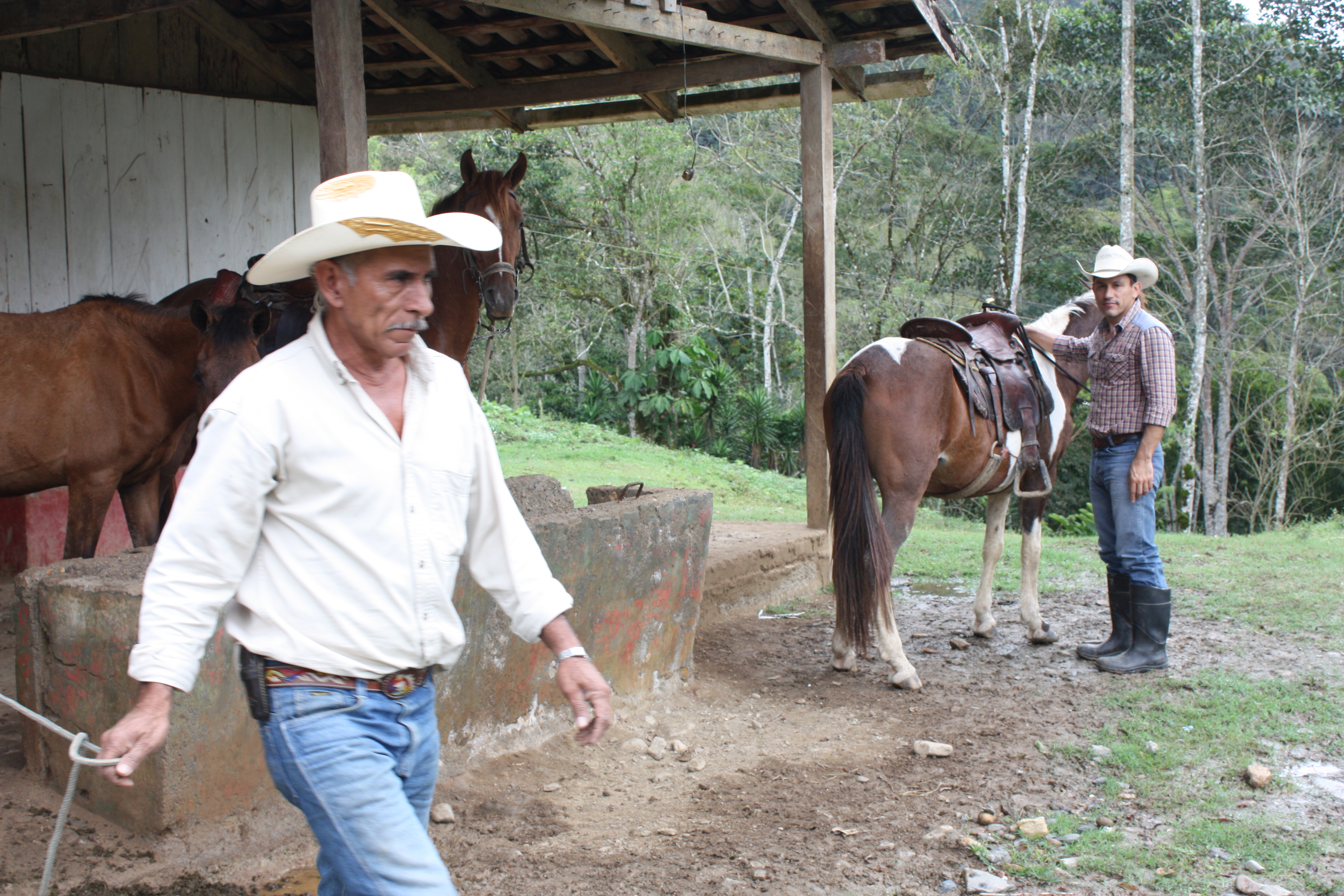
Honduras might not be the first place that springs to mind if you’re looking to holiday in that region, especially in terms of safety. But it’s easy to get straight out of San Pedro Sula and the early arrival means you’ll have plenty of time to reach somewhere both safer and more beautiful well before nightfall. Copan Ruinas is one such place. I spent a pleasant time there in 2014, riding horses out to the Guatemalan border, drinking the excellent locally-grown coffee and exploring some of the least crowded Mayan ruins in the region. Visitors were outnumbered by scarlet macaws by some considerable margin.

While I’d still be loathe to recommend spending any more of your time in San Pedro Sula than is absolutely necessary, the country’s Caribbean coast is as laid back as they come. It’s well worth risking the journey back to San Pedro Sula’s airport after your Copan Ruinas sojourn to make the short hop to Roatan Island. It’s the perfect place to unwind in the sunshine, sink your toes in the sand and sip a cocktail or two.
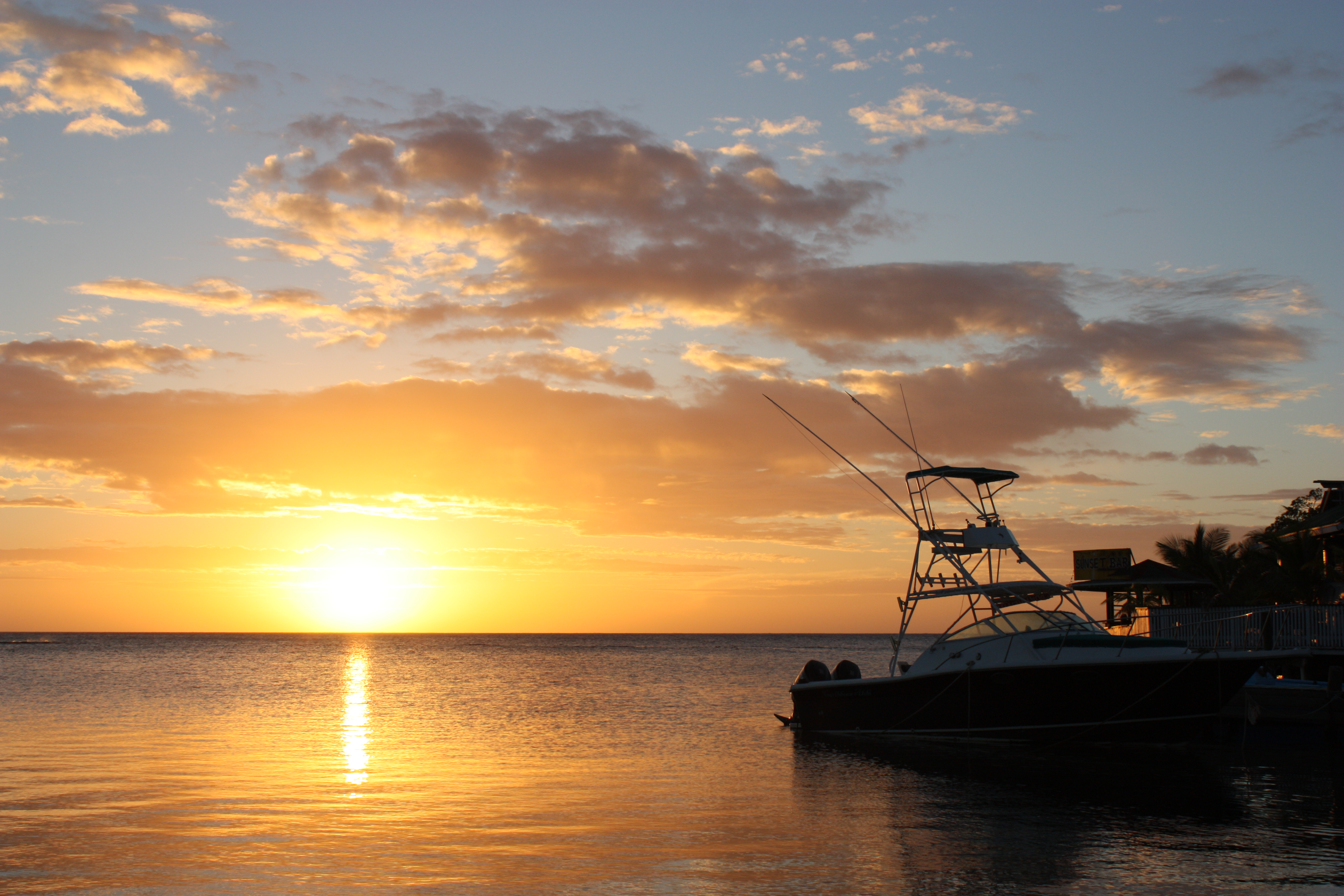
When are we going?
What’s it like to travel long haul on a budget airline?
Update autumn 2019:
While I’ll leave this post up as some of the issues about travelling long haul on a budget airline are still valid, this route no longer operates. In addition, there have been some concerning reports about the financial health of Norwegian Air in the travel press. Some long haul routes have been cut as the airline makes efforts to return to profitability. This report from the FT gives some background, but for the meantime, it’s a case of buyer beware. If you choose to book, particularly if that’s some time in advance of when you plan to travel, make sure you have adequate travel insurance that covers you for unexpected accommodation bills and new flights, just in case.
___________
It’s one thing to pay a few pounds and hop on a Ryanair flight across the Channel, but what’s it like to travel long haul on one of the budget airlines. I put it to the test using Norwegian to carry me across the Atlantic and here’s what I thought.
Flights: LGW to SJU
Norwegian operates flights twice weekly departing Wednesdays and Saturdays. They offer fares from under £300 return if you book well in advance which compares favourably with scheduled airlines serving other direct flight Caribbean destinations such as Antigua and Barbados.
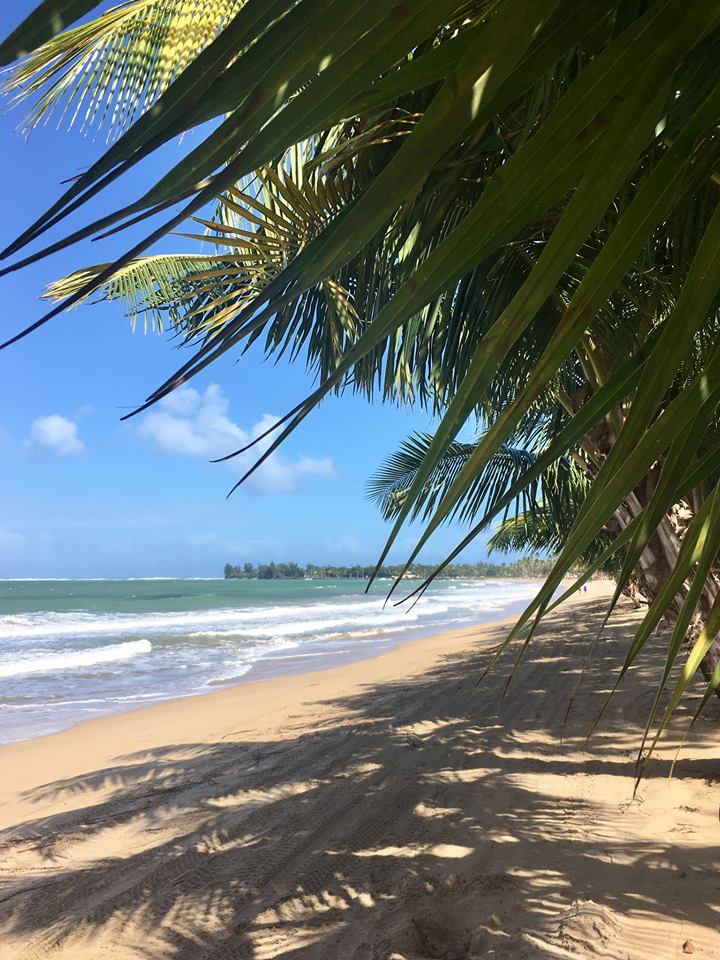
Check-in
Unlike their European routes, it’s not possible to check-in online with Norwegian for destinations to the USA and that included our destination, the US territory of Puerto Rico. That’s not such a big deal when you’re departing from a small airport, but I was a little apprehensive as to how long the wait would be to check in at London’s busy Gatwick Airport. In the event, it took less than half an hour to get checked in and proceed to security which wasn’t as bad as it could have been.
Baggage
Checked baggage comes at a price; £25 for each sector if pre-booked but significantly more if purchased at the airport. Travelling with my husband, we decided to take one full sized case and the rest as carry-on. My much travelled Samsonite wheelie almost exactly matches the dimensions of Norwegian’s permitted carry-on at 55 x 40 x 20cm (Norwegian allows 55 x 40 x 23cm). It’s a light case, which is a factor as it has to be lifted into the overhead bins and doesn’t go over the 10kg weight limit. But it’s also spacious, and easily big enough for a week’s worth of clothes for the Caribbean, though if you were heading further north at this time of year to one of the big US cities served by Norwegian you’d be struggling for space.

Seat assignment
Normally, my husband and I wouldn’t bother to pay extra for seat assignment on a short haul flight, but we decided to go ahead as this was a nine hour flight. Each way cost us £25, a total of £100 to sit together. I do think that’s steep. We chose from an online seating plan opting for the back row of the plan (row 40) as this has a 2-3-toilet configuration, meaning we expected to have the section to ourselves. You can see it here at Seatguru:
https://www.seatguru.com/airlines/Norwegian_Air_Shuttle/Norwegian_Air_Shuttle_Boeing_787-8.php
However, although we were still on a 787 Dreamliner, the plane we ended up travelling on had 42 rows ( though 40 on each of the side sections) and they were 3-3-3. This was what we got:
https://www.seatguru.com/airlines/Norwegian_Air_Shuttle/Norwegian_Boeing_787-9.php
So we ended up with someone next to us which was a bit of a disappointment. Fortunately, few people seemed to be using the rear toilets so it wasn’t too disruptive.
Legroom
On the outward leg, we found the space to be really cramped. Neither of us are exceptionally tall, but we do have long-ish legs. When I checked I was surprised to find that the legroom at 31-32 inches was similar to most long haul airlines. The width also compared to the norm at about 17 inches, though this would have been more comfortable if we’d have had window and aisle as we expected rather than window and middle which is what we got. We could have opted to pay extra for Premium Economy which offered a seat pitch of 46 inches.
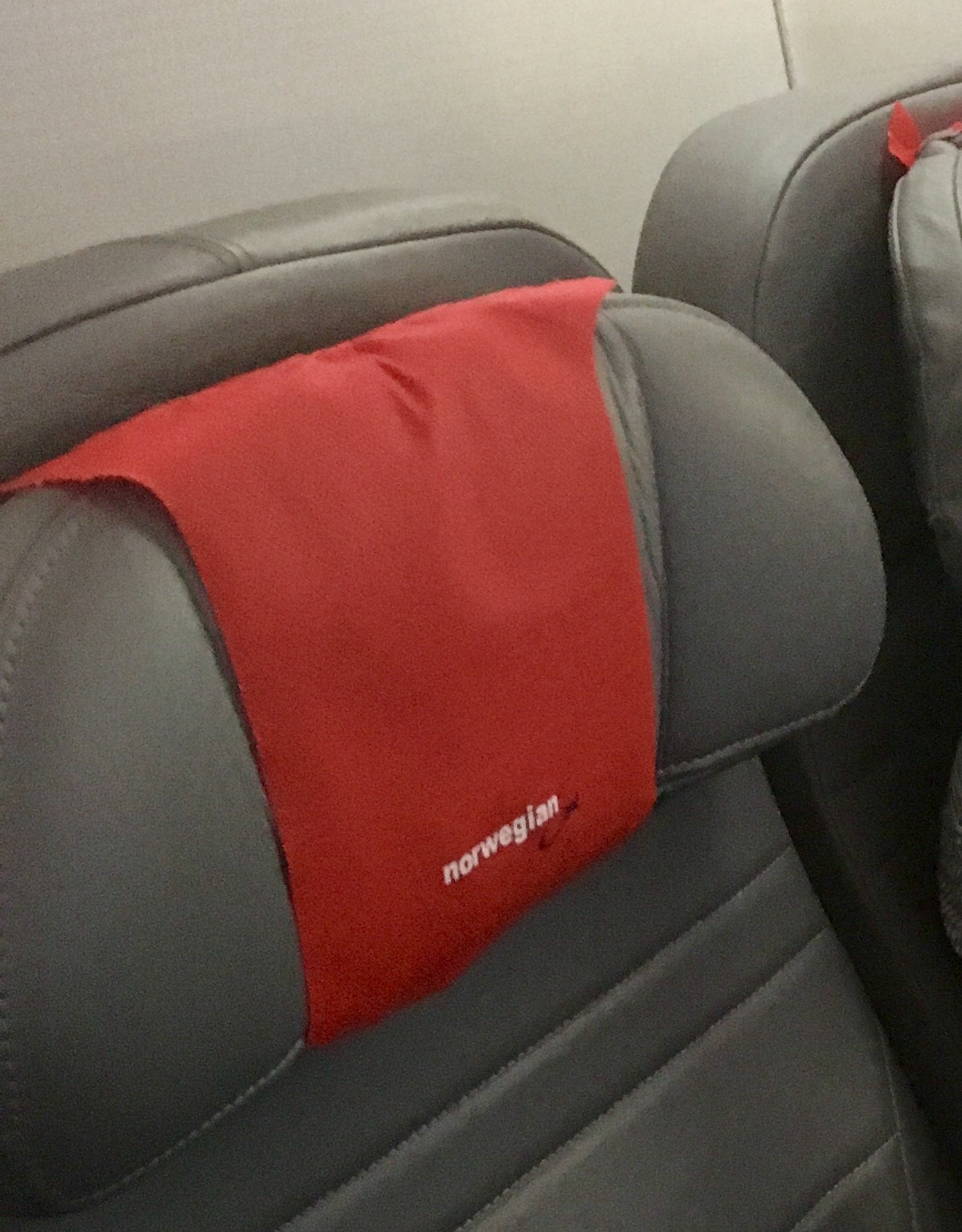
Food
Neither of us felt it would be a good use of our funds to pay for the in-flight meals, opting instead to have a meal before we left and take snacks on board and pay for drinks airside. We were happy with this decision; the trays of those fellow passengers opting for meal service looked OK but not over-generous and we didn’t feel we’d missed out. A lot of people had done the same as us. It was an even better decision on the return journey when we had a shorter journey (thanks to a speedy tailwind) and of course, being an overnight flight, we slept for a significant portion of the journey.
Entertainment
The choice of entertainment was perfectly reasonable though I had a good book to read so didn’t end up watching any of the content. There were recent films I hadn’t seen. You should be aware that you either need to purchase headphones or bring your own. Also it’s worth noting that the WiFi that you find on some European flights with Norwegian isn’t available on their Trans-Atlantic routes.
Blankets and pillows
These aren’t given out free of charge as you’d find with a full service airline. You can buy a blanket at a cost of $5 but we found bigger, fleecier and warmer ones in Walmart for $3 a pop. Since we unpacked, they’ve been appropriated by the dogs!

Dreamliner
This was my second time on a Dreamliner after flying from Easter Island to Santiago de Chile on one in 2015. They make a big deal about cabin pressure, mood lighting and windows that have sunglasses mode, and claim this helps to alleviate the issues with jet lag. I’m not sure this had an effect, though as there’s only a 4 hour time difference the effects of jet lag would be minimal anyway.
The verdict
Would I fly Norwegian Trans-Atlantic again? Yes, I’d definitely consider it. I was happy with the experience overall though I’d see if I could upgrade to an extra legroom seat next time. In the interests of marital harmony I’d probably be best not to comment on whether sitting with my husband was worth £100!
Update May 2017
At the time of writing it’s unclear whether Norwegian will be flying the LGW-SJU route this autumn. The airline is considering whether it will fly to Puerto Rico at all, but if it does, the London route will probably be the only one to survive the cull, managing 81% occupancy last season. Watch the press for details.
Just back from – a day at Copenhagen’s Christmas markets

What next after the German Christmas markets? Germany’s legendary Christmas markets draw the crowds each winter and rightly so. As I found out when I visited the Bavarian city of Regensburg a couple of weeks ago, they’re atmospheric, colourful and every bit as good as people say they are. You can read about the trip here:
https://juliamhammond.wordpress.com/2016/11/25/just-back-from-a-day-trip-to-regensburg/
So how do you top that? With a visit to Copenhagen: take the German Christmas market model, swap the Glühwein for a glass of gløgg and add a healthy dash of hygge.

Best of all, if you haven’t the time or the cash to go for longer, it’s possible to visit the Danish capital for the day. It was my second trip to the city. The first was back in the days when the cheapest way to reach Copenhagen was to fly to another country. That wasn’t quite as daft as it sounds, as the airport in question was Malmö’s in nearby Sweden, a fast train ride across the Øresund Bridge. This time, I flew direct to CPH, leaving Luton after watching the sunrise on the 8.40am flight. Ryanair uses satellite terminal F which is a long walk from the main terminals. Factor in a five to ten minute walk just to get across the airport and don’t expect a travelator.

From the airport it’s about a fifteen minute train ride into central station, with plenty of English speaking staff at the airport to help out at the ticket machines. I opted for a 24 hour travelcard (not to be confused with the expensive Copenhagen Card) which cost 80 DKK. As it turned out, I walked more than I’d intended, but had I chosen to cover more ground, the card would have been valid for unlimited journeys in the city centre by train, metro and bus. By just after midday, I was in the city.

Now like I said, I’ve been to Copenhagen before, so this blog isn’t going to be reviewing the Amelienborg Palace or the Little Mermaid. This time, I was focused solely on Christmas. Emerging from the station coffee in hand, the Tivoli theme park was right across the street and impossible to miss. I decided to save it until the end of the day and instead walked the short distance to Axeltorv Square. My first Julemarked of the day was a small affair, a cluster of stalls all bearing the names of Hans Christian Andersen’s stories. It was a little underwhelming, just a few stalls selling items like sheepskin rugs, warm hats and Christmas decorations.

A few minutes from Axeltorv Square, a rather large wooden pig caught my eye. Behind it was a wooden Christmas tree which looked to be made out of broken up pallets or something like that. A few huts made out of the same material formed a crescent around them. This was a Julemarked with a difference, focused on recycling, a statement about the excesses of this festive holiday. But it wasn’t preachy: instead it embraced the spirit of Christmas on the cheap.

The huts all offered a way to help out with the expense of present-buying. There was a Swap Shop where you could leave an unwanted gift and in return got to choose something for yourself. A woodworker’s hut provided tools and off cuts for those who wished to be creative and make a gift. The lady running the plant hut gave me a small packet of tomato seeds which I shall plant when I work out when’s the best time. The largest hut of all was a recycling “factory”. Inside, piles of yarn, card and other craft materials were piled alongside glue guns. Several people were making table top Christmas trees, but what made this unusual was that most of them were adults rather than children. What a great idea!

Next up was a stroll along Strøget to the wonderful department store Illums Bolighus. This amazing store is a mecca for any devotee of Scandi-style and its products, though expensive, are the stuff of envy. Every display could have held its own in a fancy homes and interiors magazine. The question was not whether to buy, but what to leave behind. Illums Bolighus, if you’re reading this, open a store in London won’t you? I promise I’d keep you in profit.

A few doors down from paradise at the end of the street, was another Christmas market. The entrance was marked by a wall of Christmas trees ready to go home and the market itself housed more food and drink stalls than any other market. At the sausage stall, a man munched on a hot sausage in a roll. At his feet was a dog. It sat, as motionless as if it was doing the Mannequin Challenge, eyes fixed on his master’s hand. Tiny drops of saliva dripped from the wet fur around his mouth and puddled on the floor. Finally, the man was finished, save for the last half inch of sausage, which of course the dog had as a reward for his patience.

There was still more to come. Straddling a pathway opposite the beautifully decorated Hotel D’Angleterre, the Kongens Nytorv market was probably the busiest of those I visited. Located between Nyhavn and Strøget, a fat queue of tourists wound its way between stalls selling everything from churros to ham hocks, night lights to sheepskin slippers. There were craft stalls and of course, many more gløgg huts. The crowds were frustrating and as it was still daylight, the life size polar bear models looked tacky. I would return that way after dark, when they were illuminated and looked better for it.
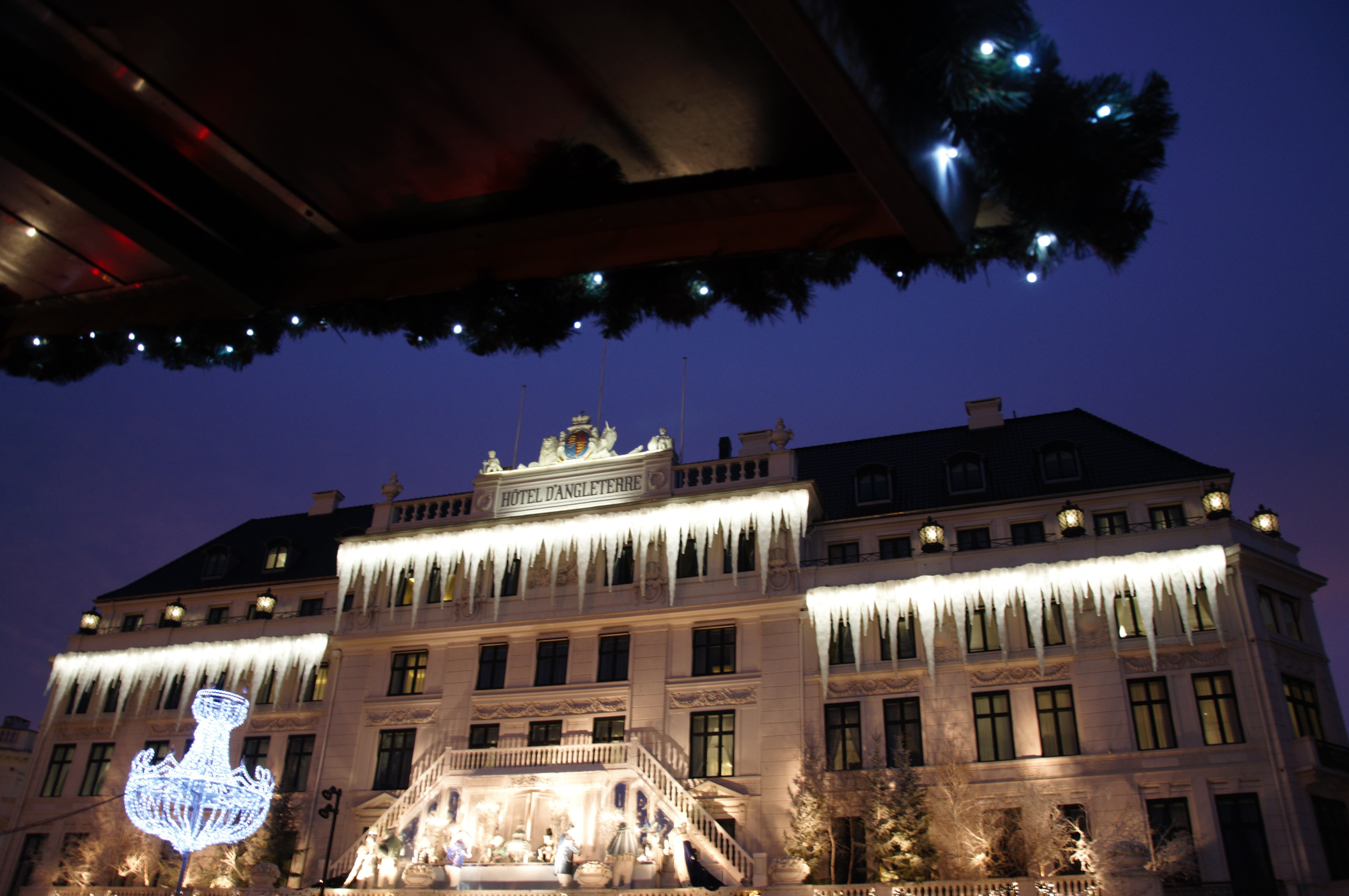
Through Kongens Nytorv and out the other side I breathed a sigh of relief to have wriggled free of the crowd. Fortunately, I was only a stone’s throw from Nyhavn and yet another market. I sat on the quayside enjoying a glass of gløgg – not too fussed on the addition of blanched almonds but the raisins were a welcome find at the bottom of the glass. If you’re not sure if you’ll like it, ask for a free taste.

This time I decided to have a bit of food before exploring the market. I found that the further down the quay I walked, the lower the prices were for comparable dishes. A huge plate of roast pork with crackling with red cabbage and potatoes later, I had a browse round the stalls. Hopefully my husband isn’t reading this but I did come home with a very soft and fluffy cushion cover. (I am kind of banned from buying more cushion covers. It’s become a bit of a thing.) Sunset was spectacular, casting a pretty pink glow over the harbour side buildings.
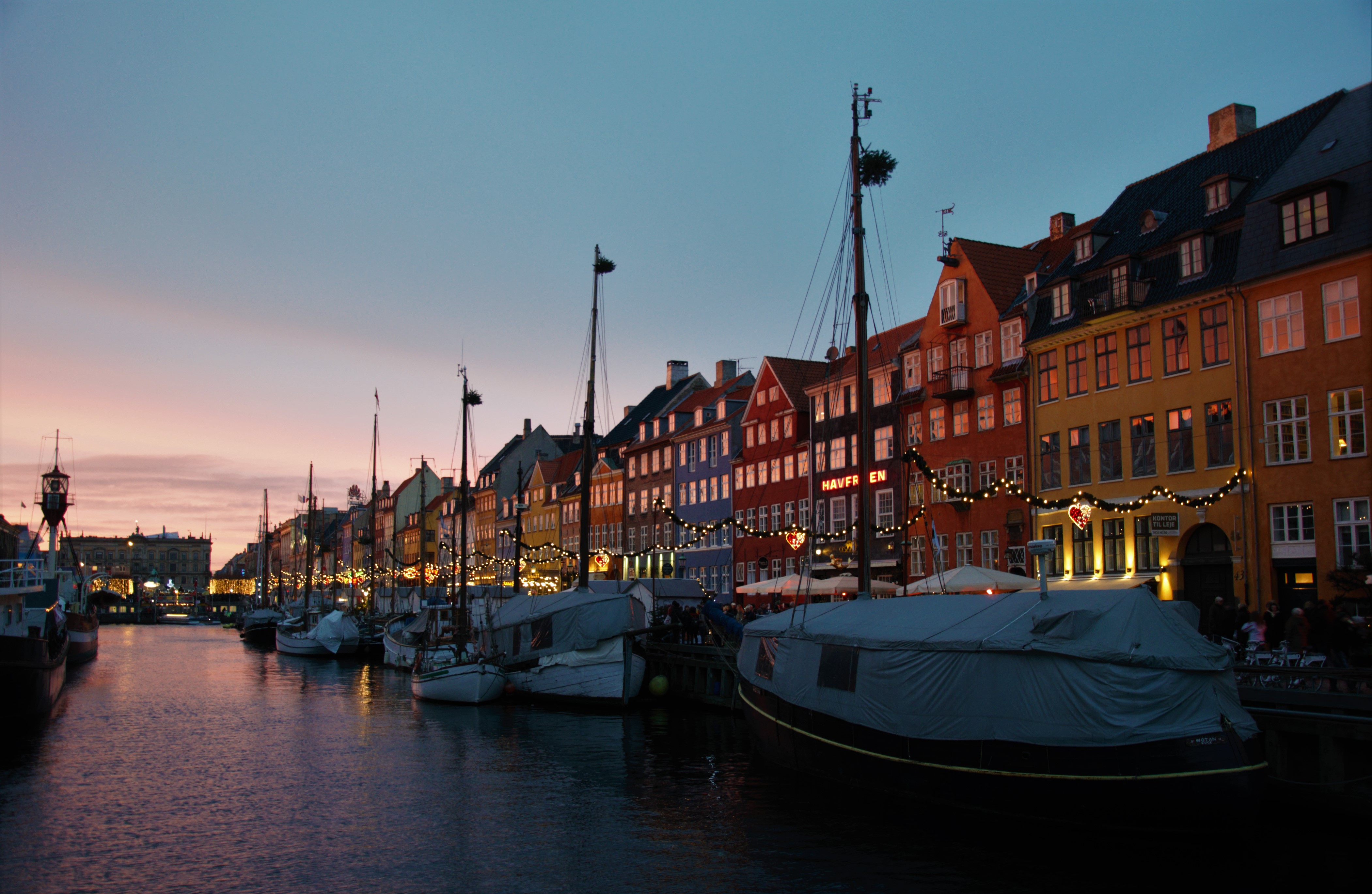
As night fell, there was one more Julemarked that I wanted to see before I left and one that was worthy of the long queue outside. Yes, the queue was round the block. What did I expect on a Saturday night? Tivoli opened in 1843, making it the world’s second oldest theme park (the other is in Denmark too, but much less famous). Tivoli is expensive, with a hefty entrance fee of around £15 just to get in (the rides are extra) but it is such a charming place during the run up to Christmas that it’s worth it.

There was plenty to see, both in terms of the theme park itself – I loved the carousel – but also in terms of independent retailers and the range of food stalls. The temperature had slumped well below freezing though by this point and with so many people packed into the huts and restaurants, there were very few places where I could escape that intense cold. The lights and decorations kept me going for a while – they were superb – but by 8pm I was really feeling it despite being properly kitted out in thick padded jacket, scarf and gloves. It was time to grab a cup of cocoa from the station cafe and return to the airport in plenty of time for my 10pm flight home.

I ♥ Copenhagen

